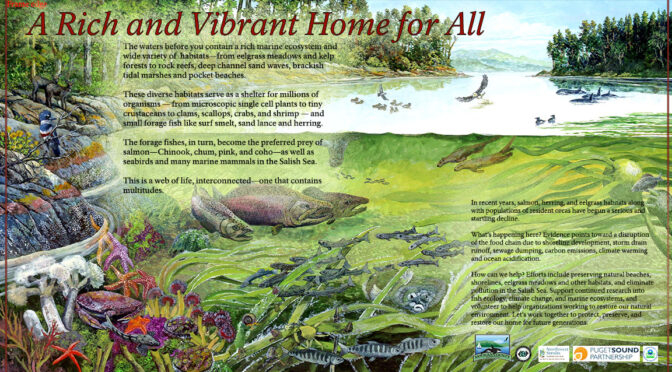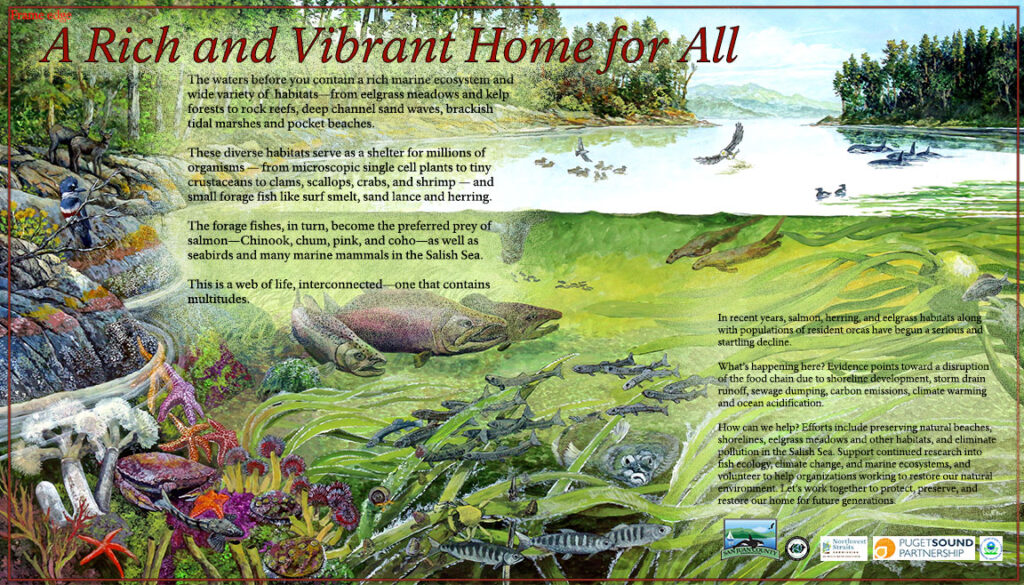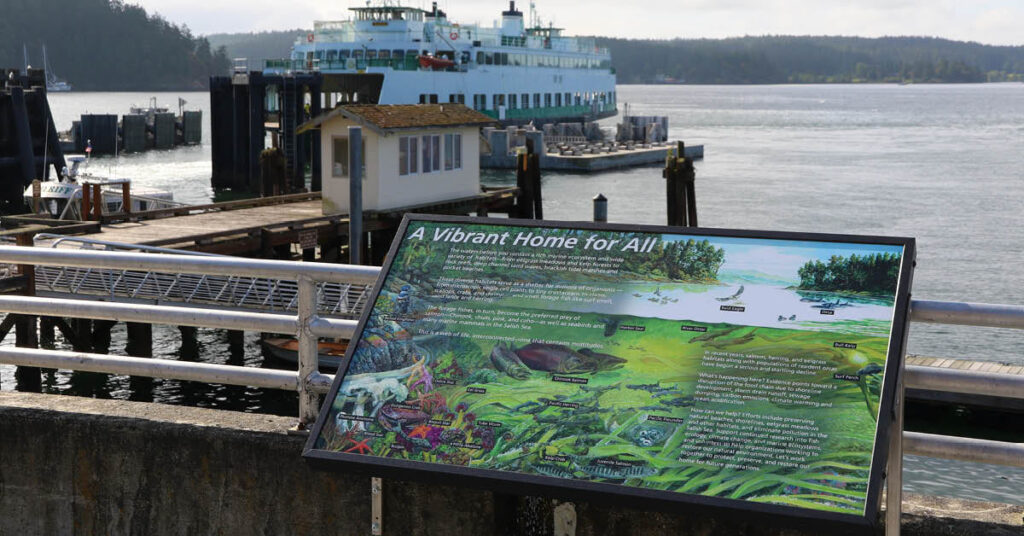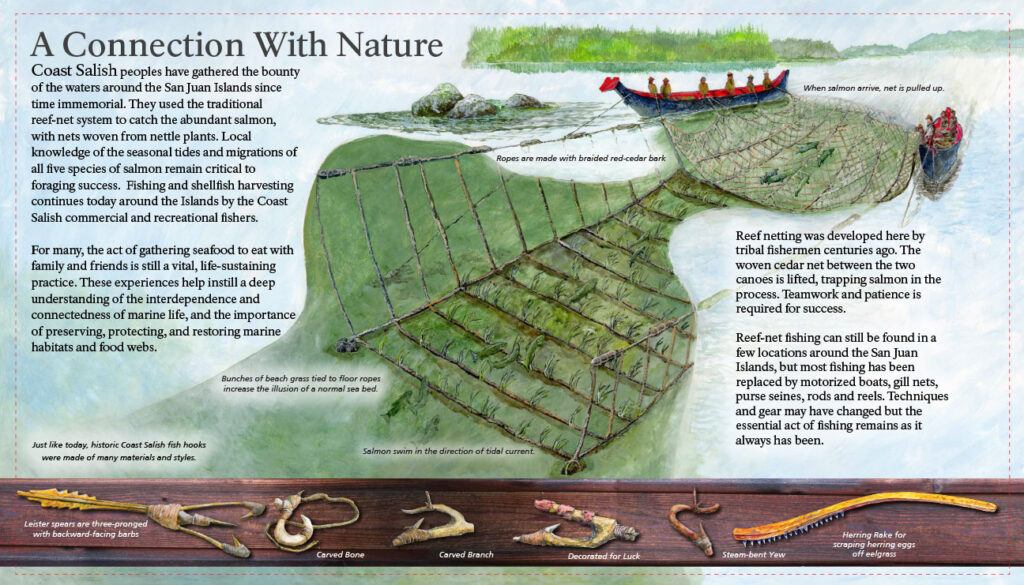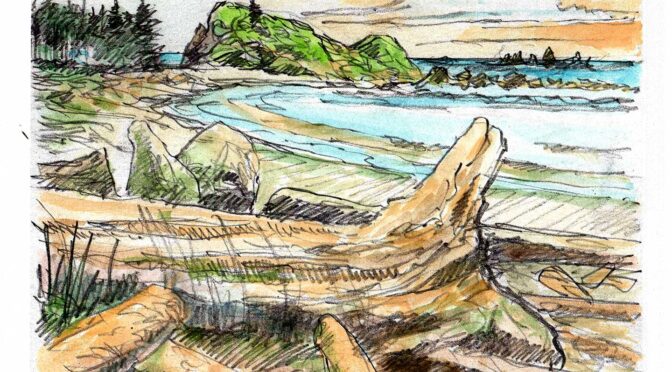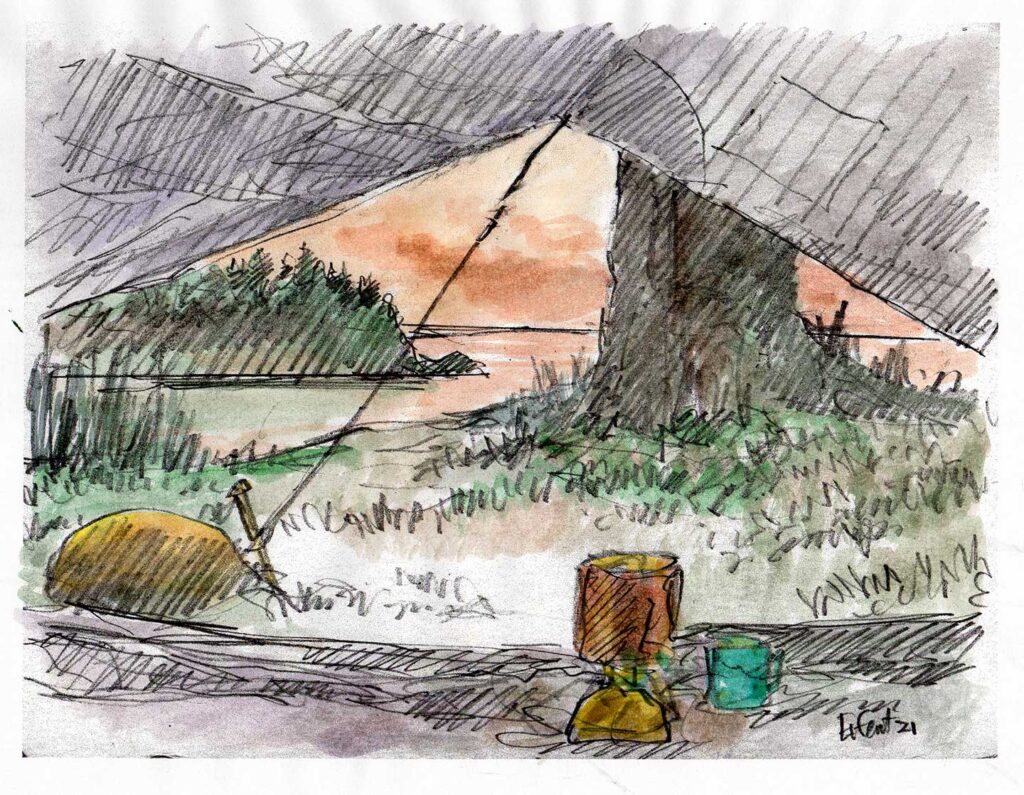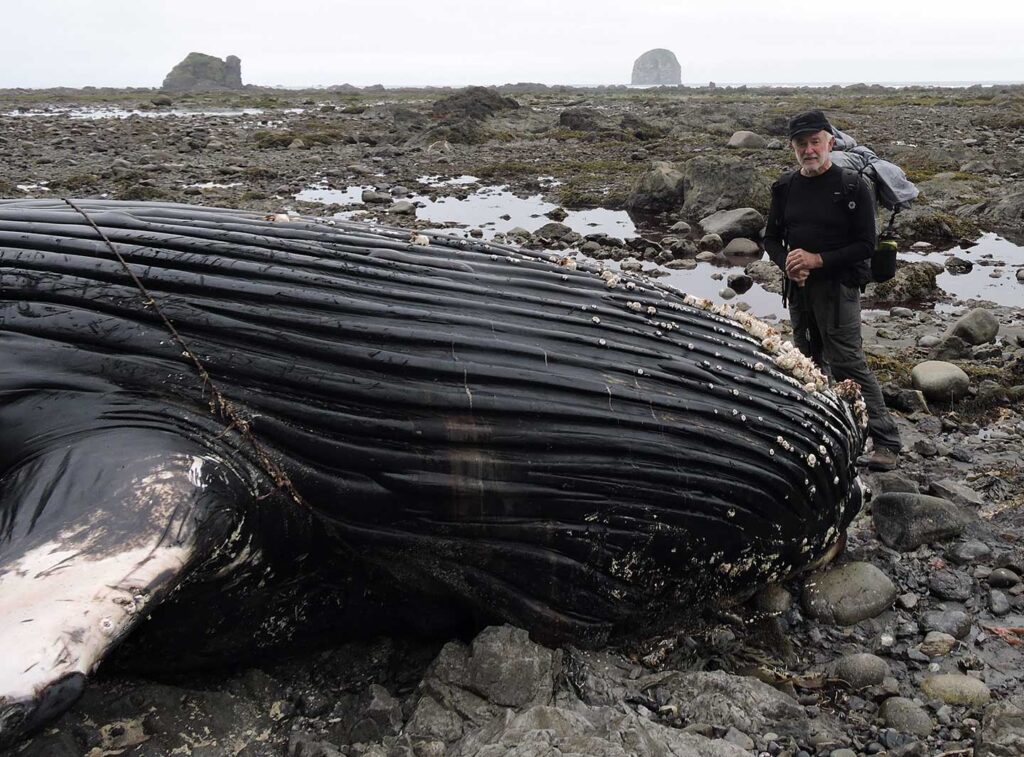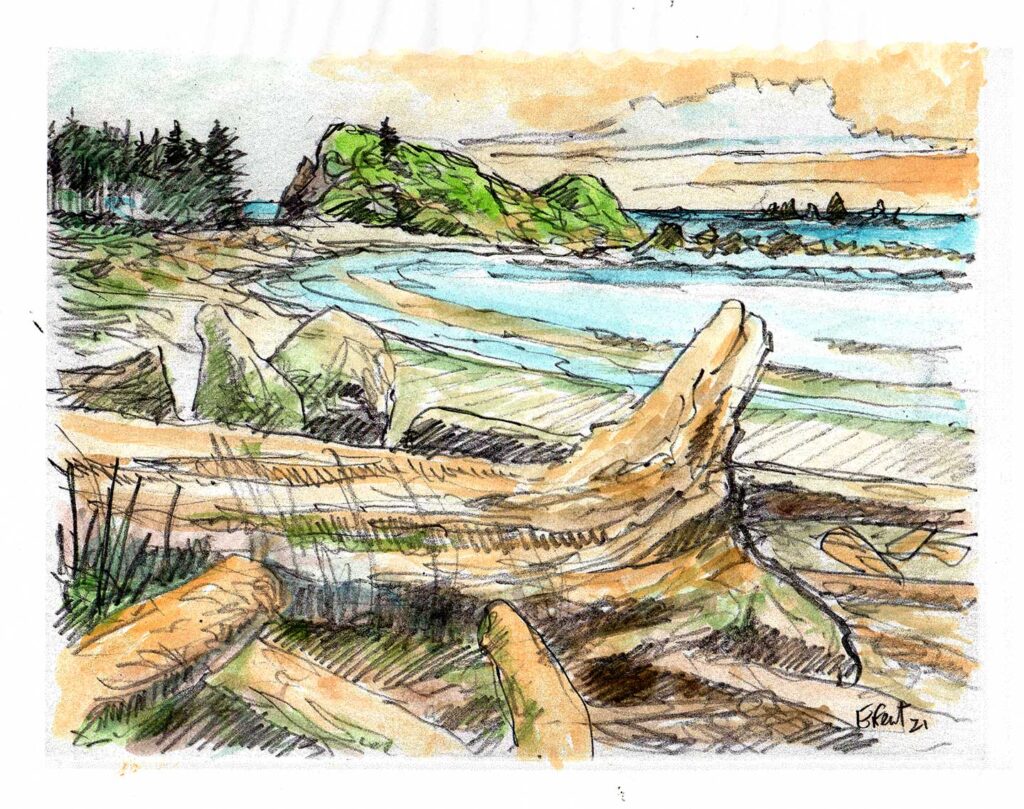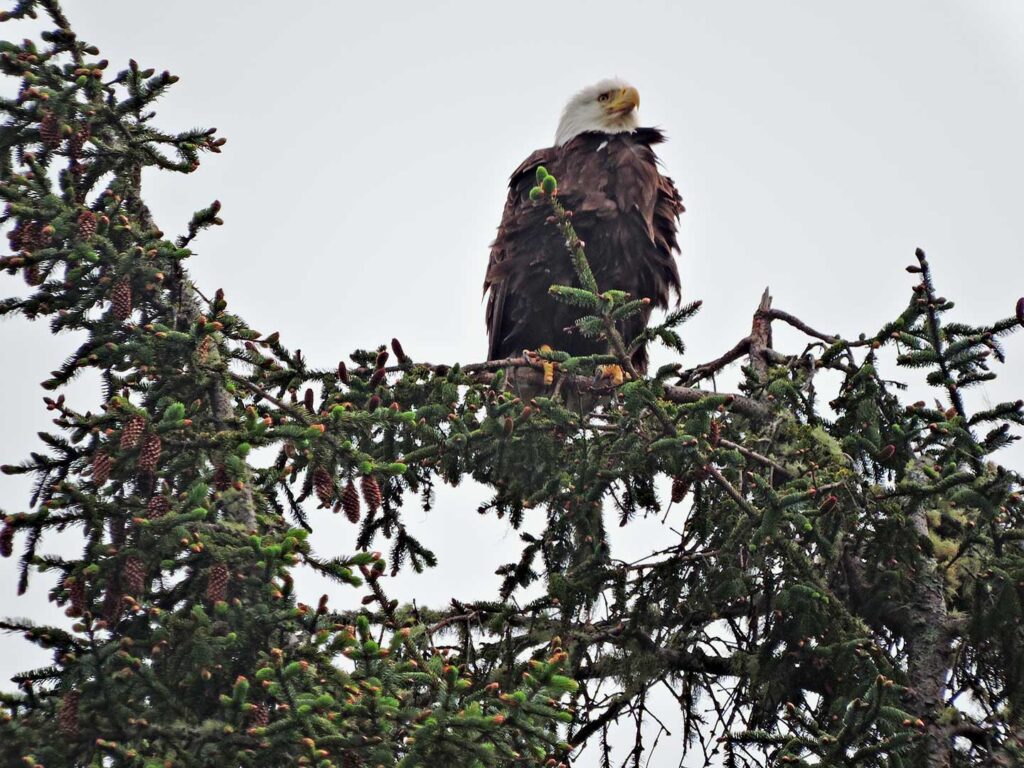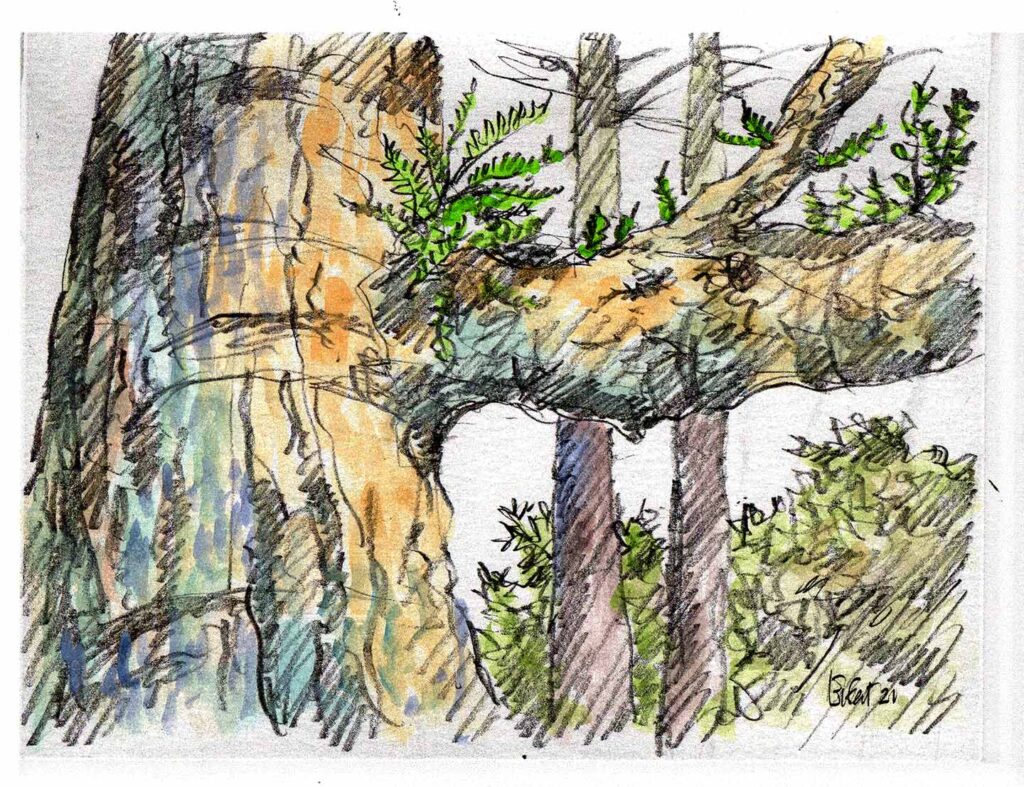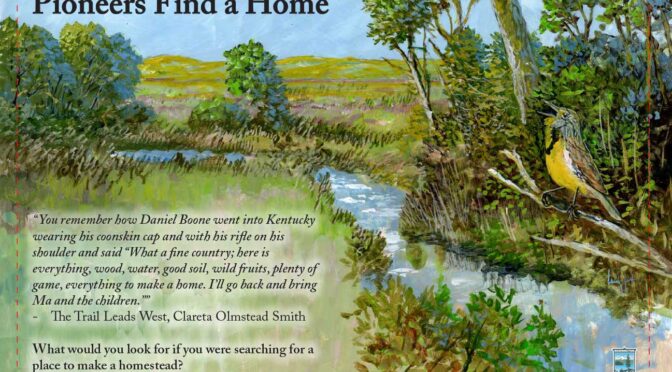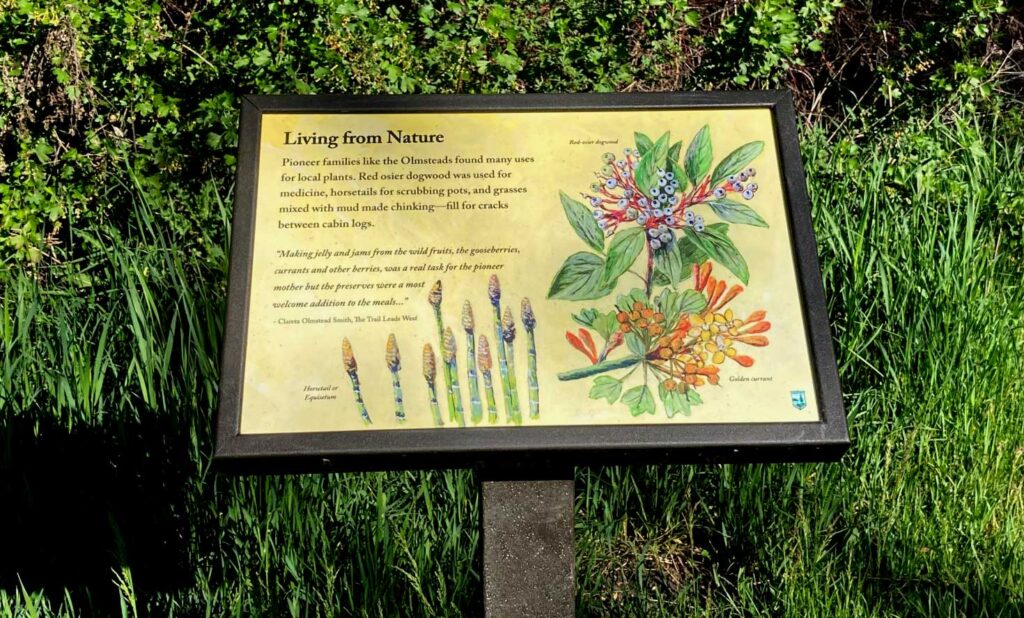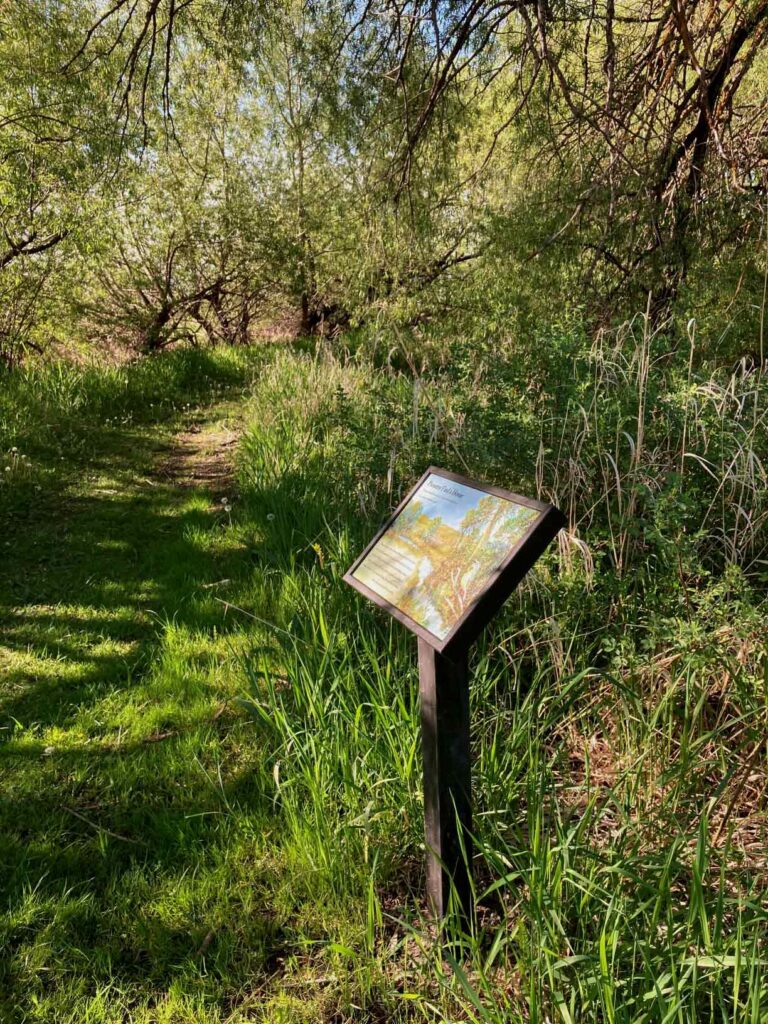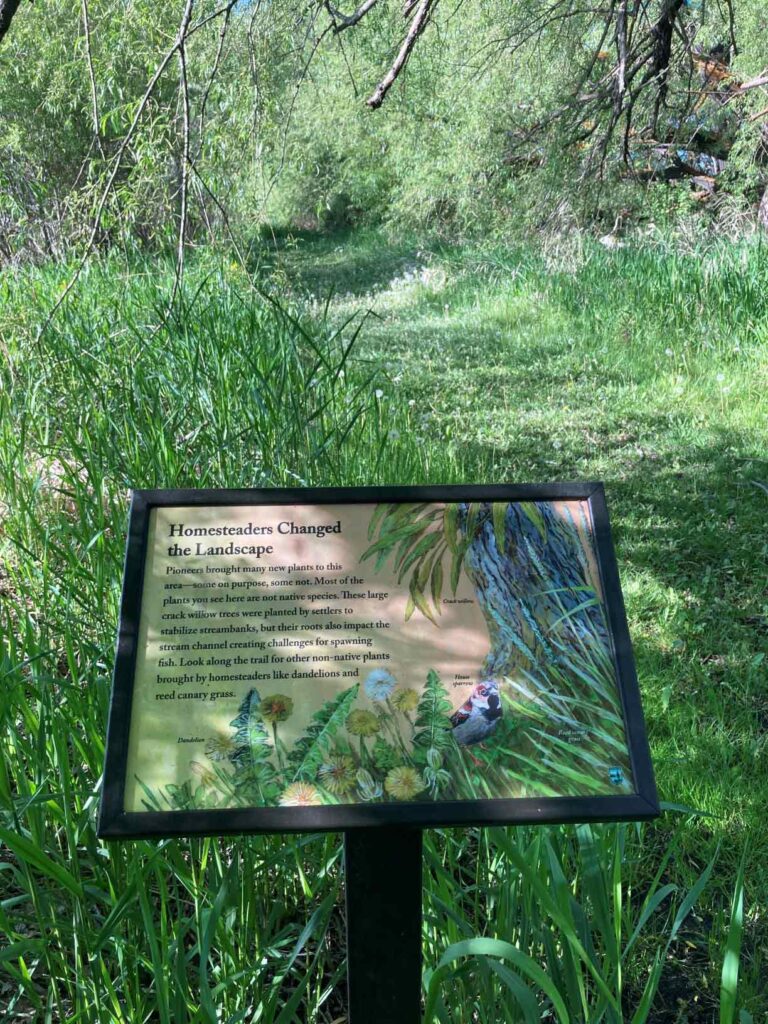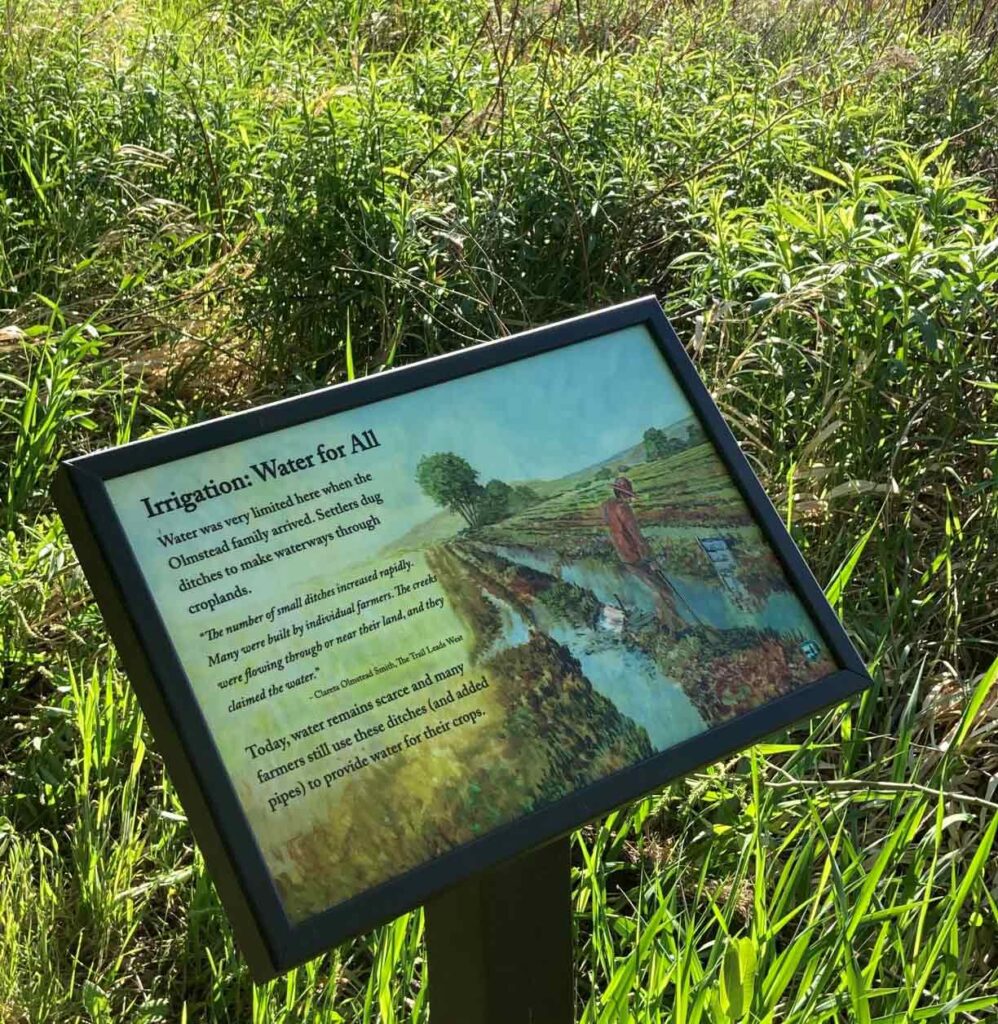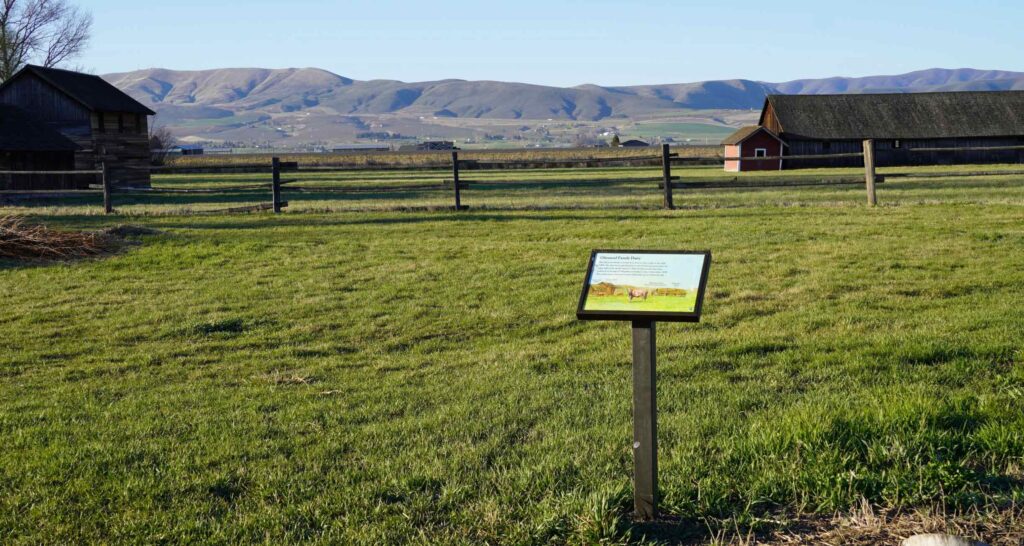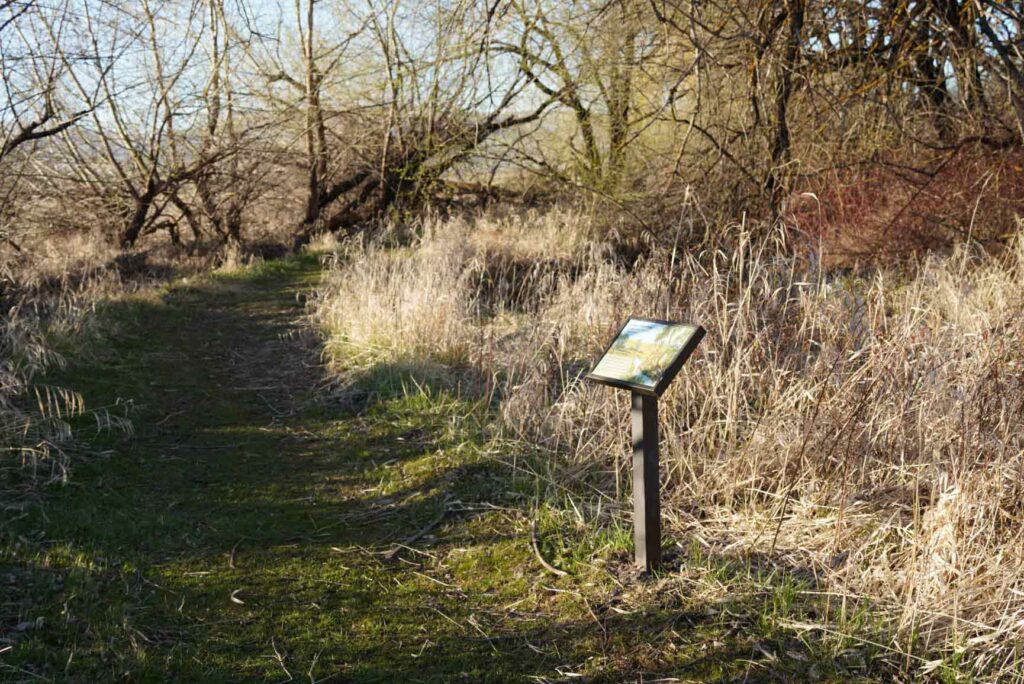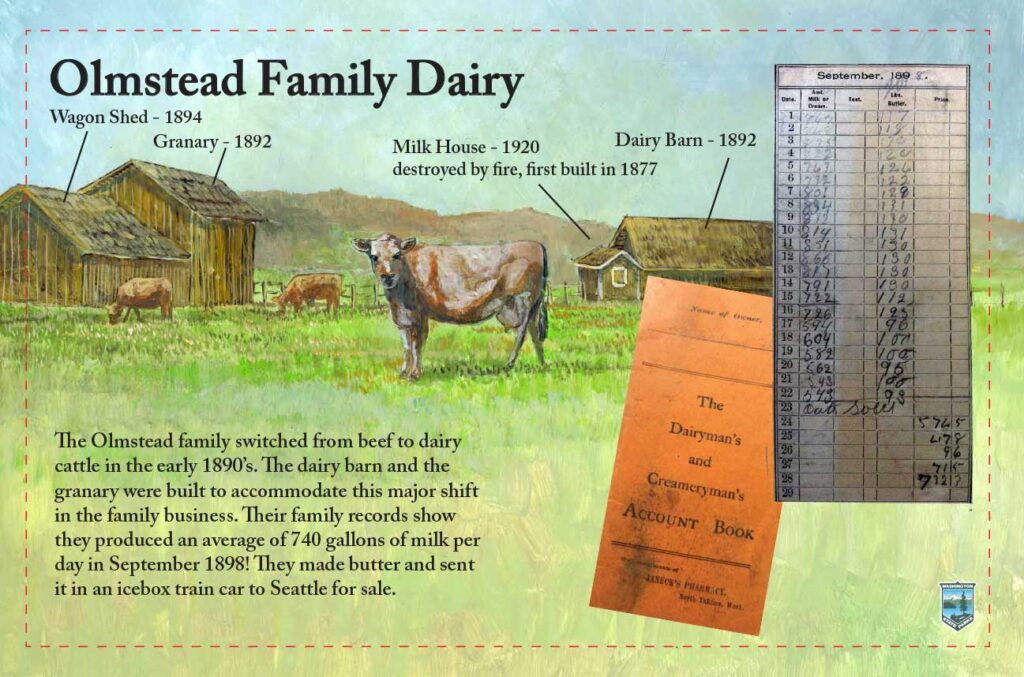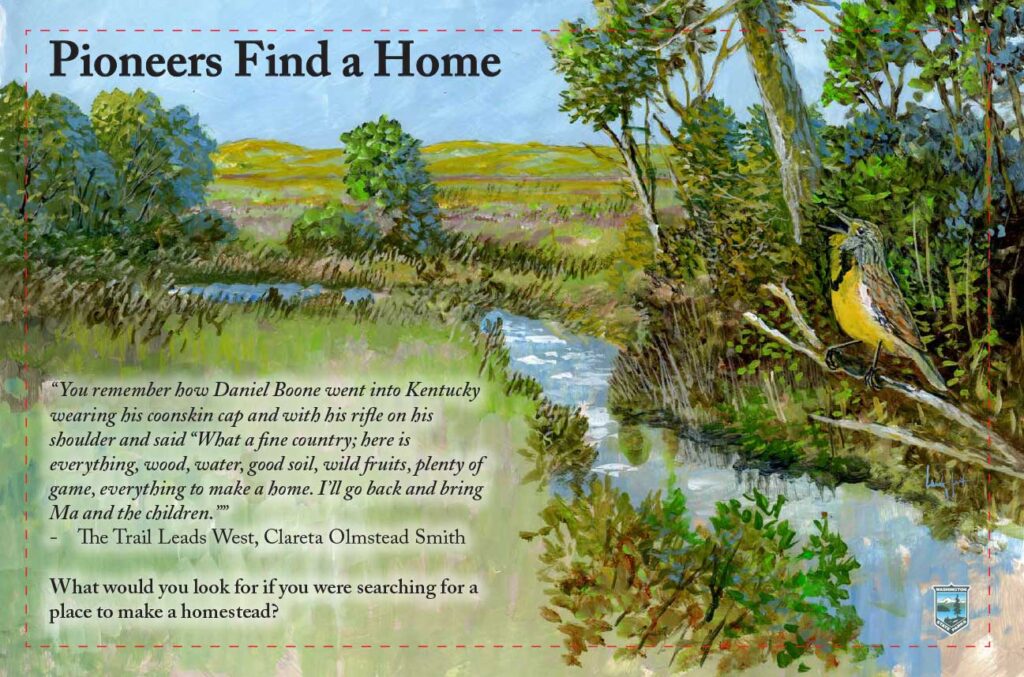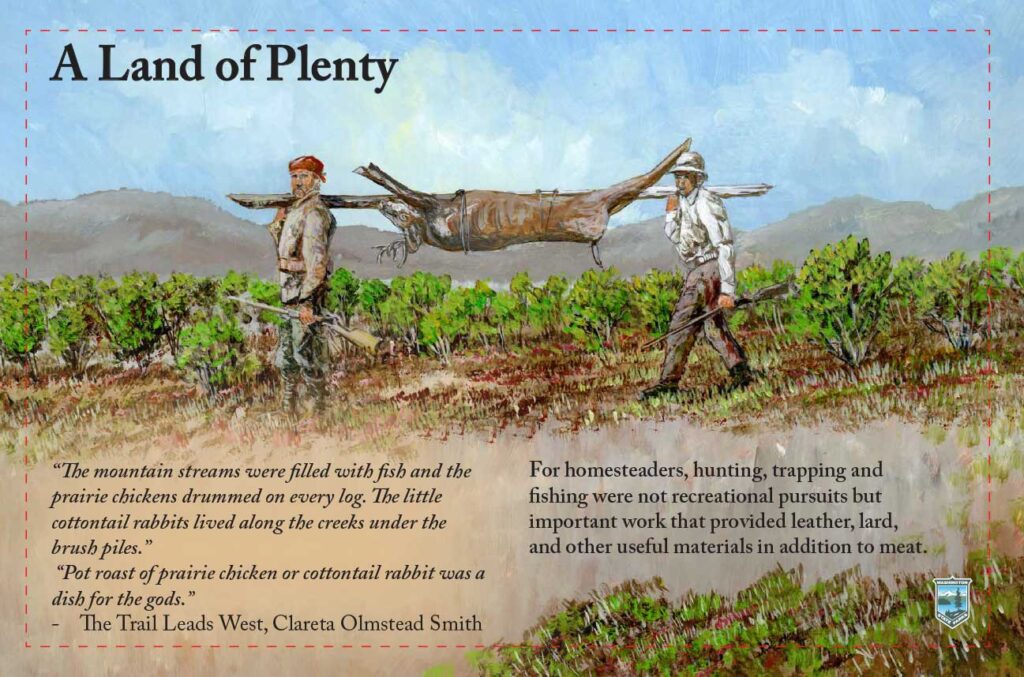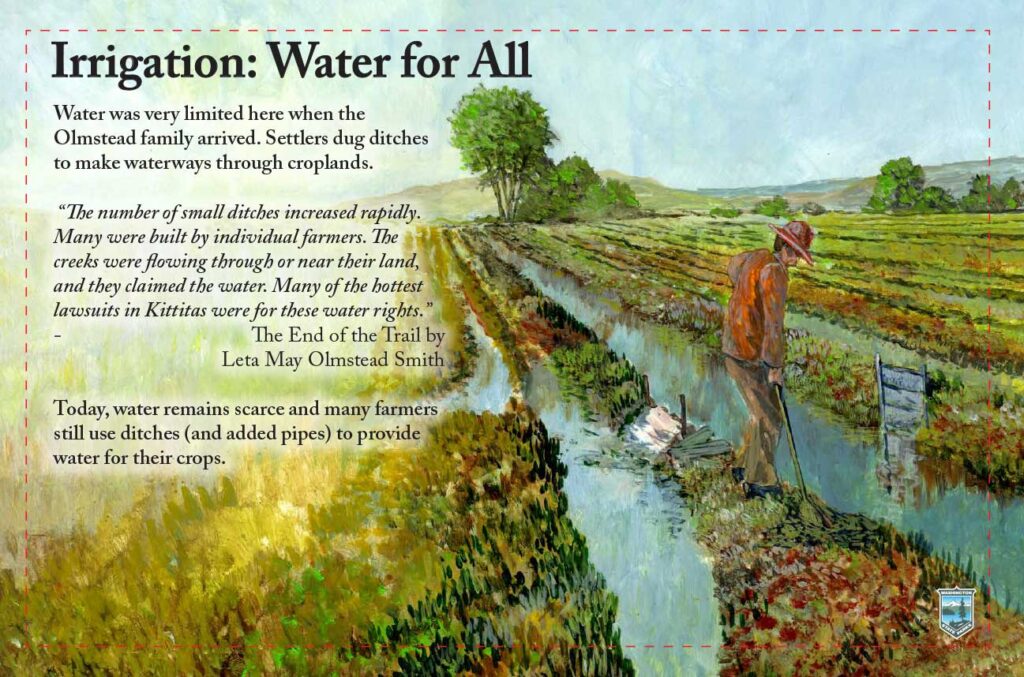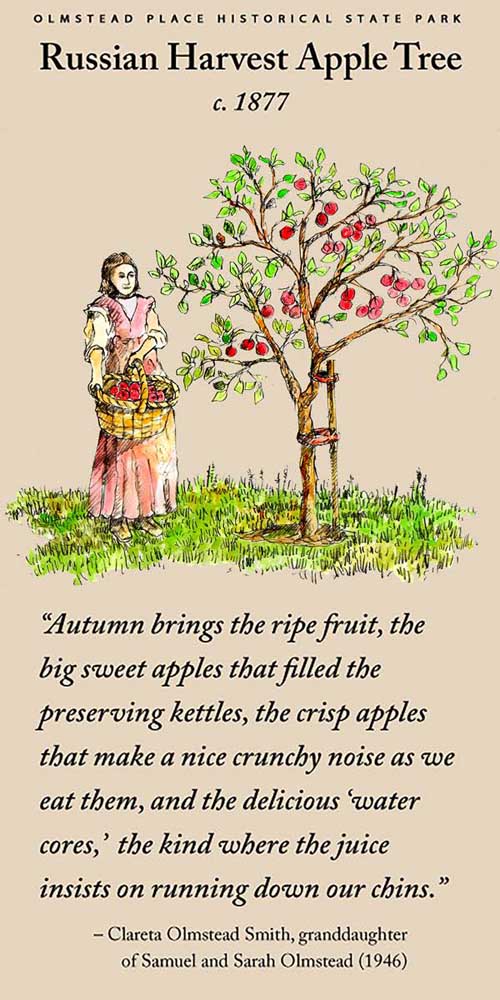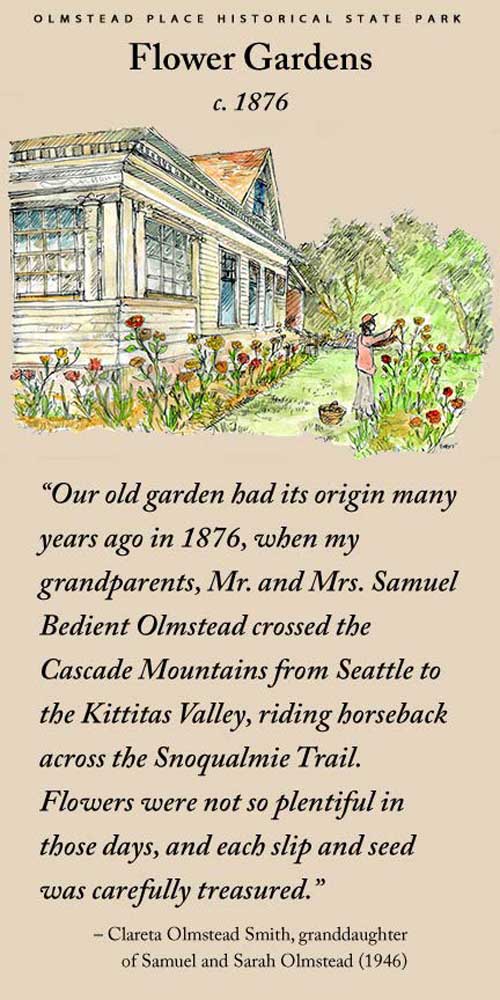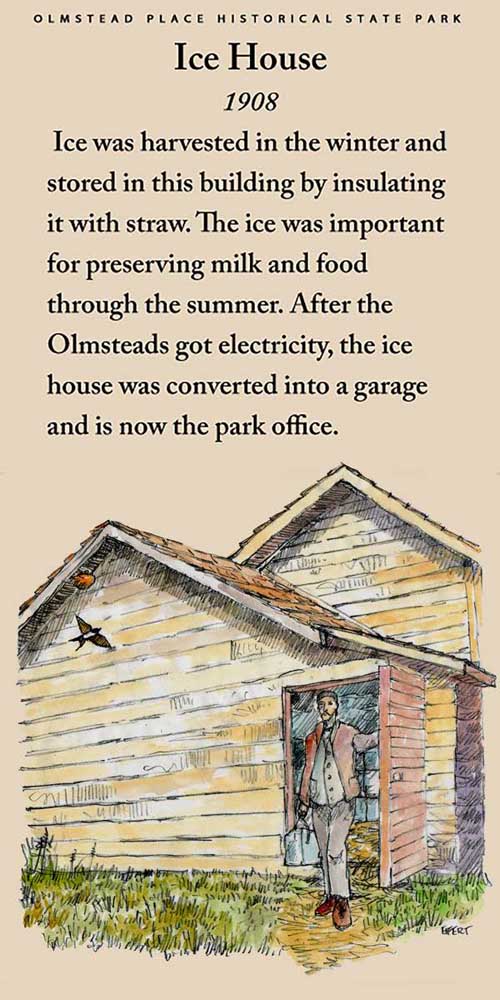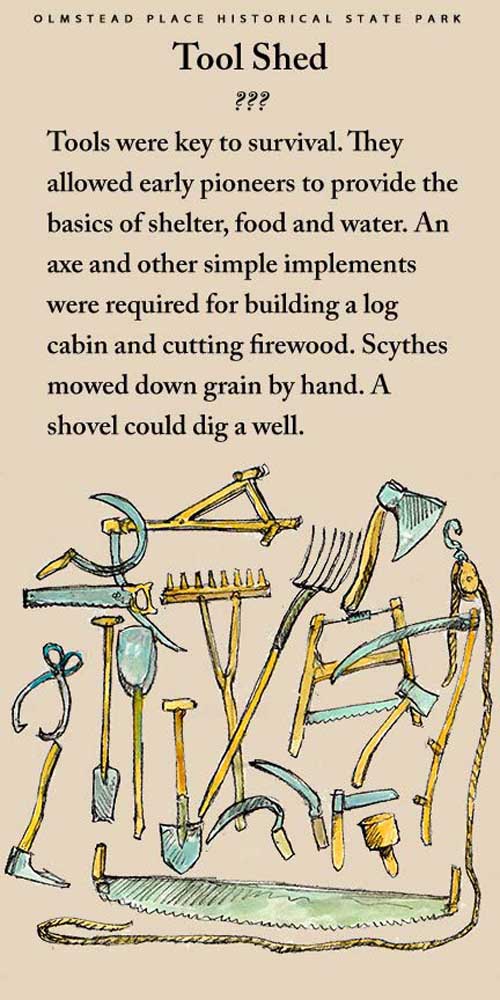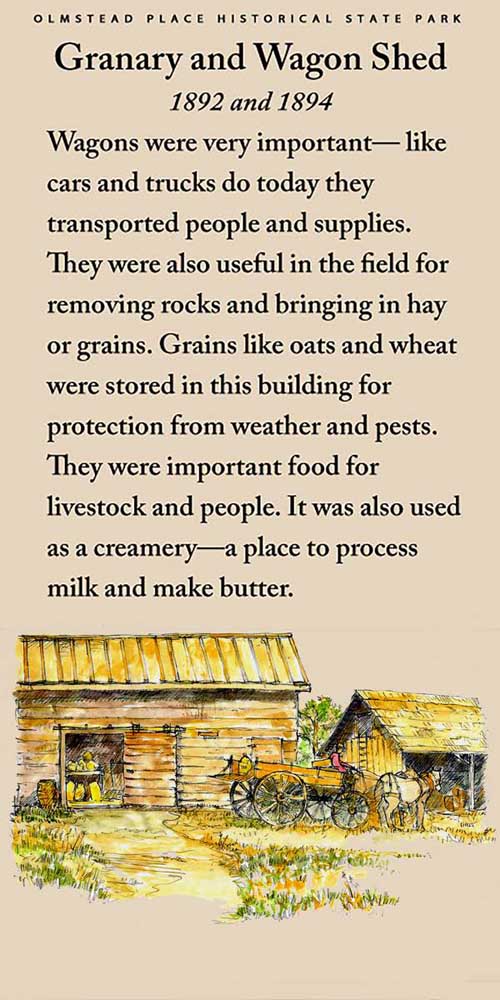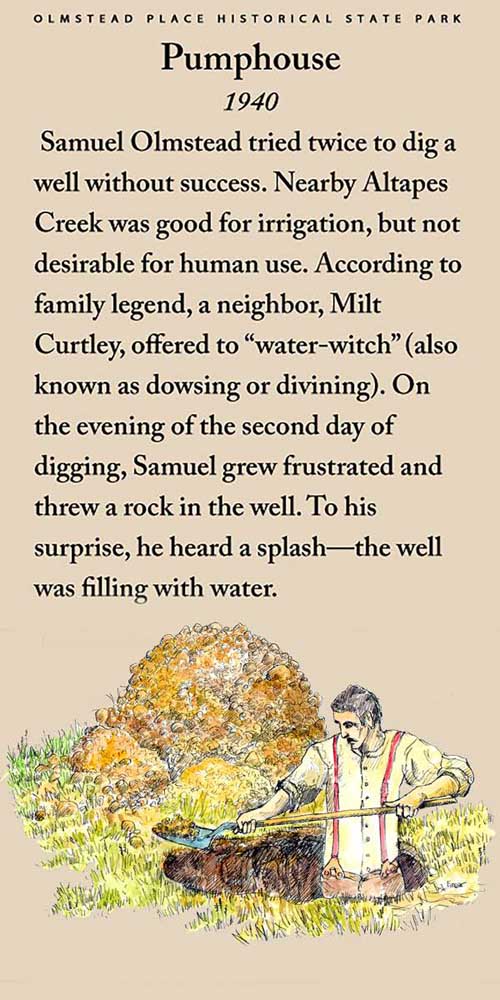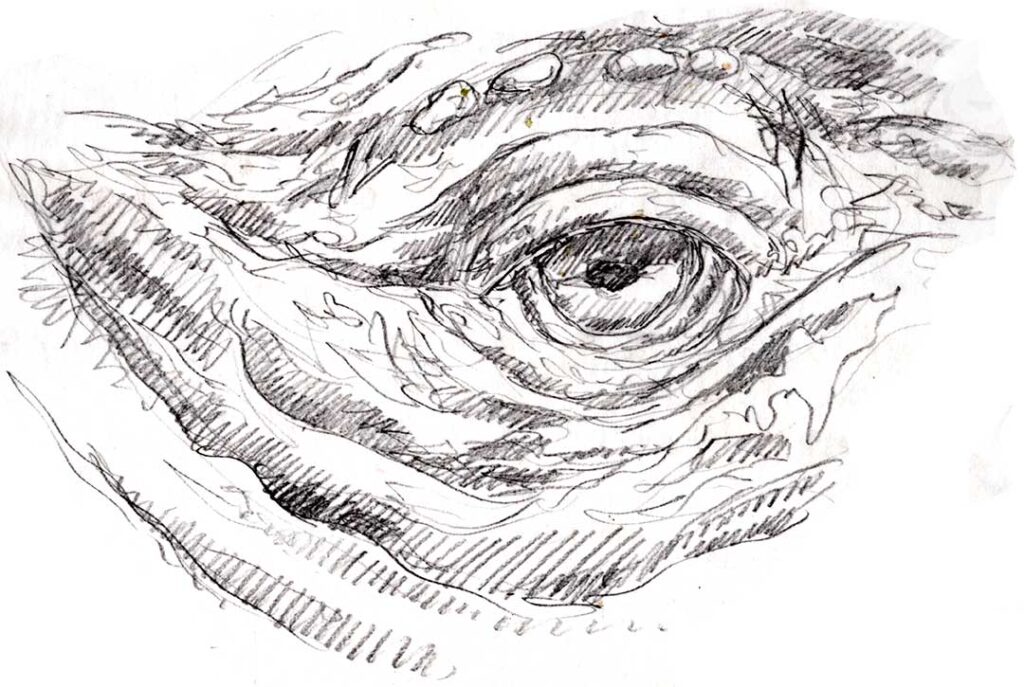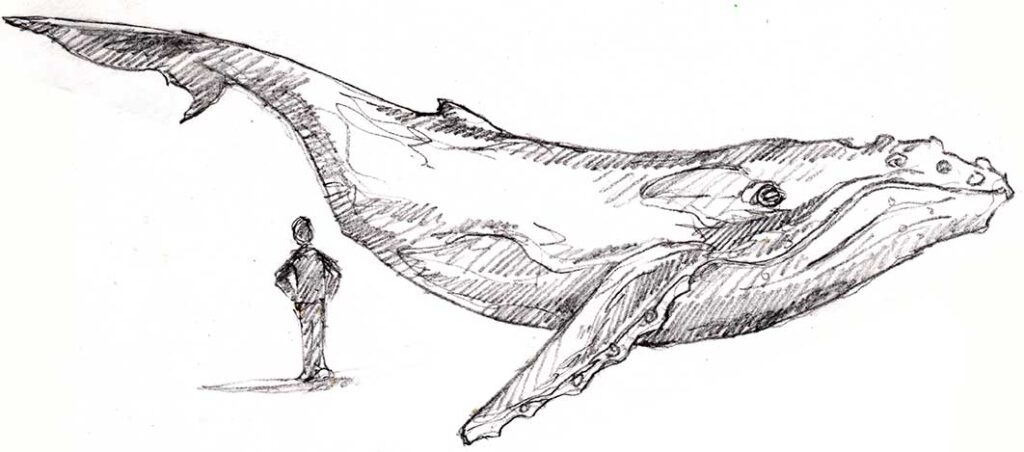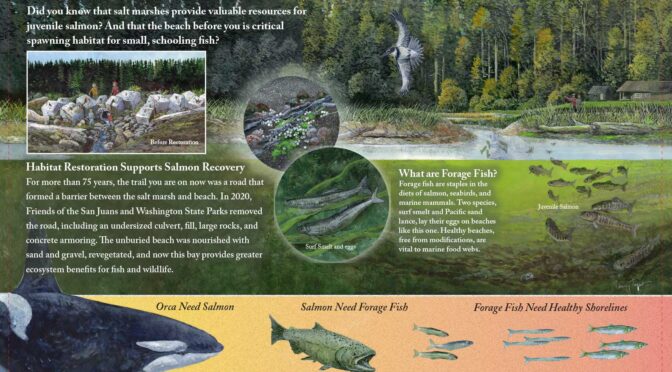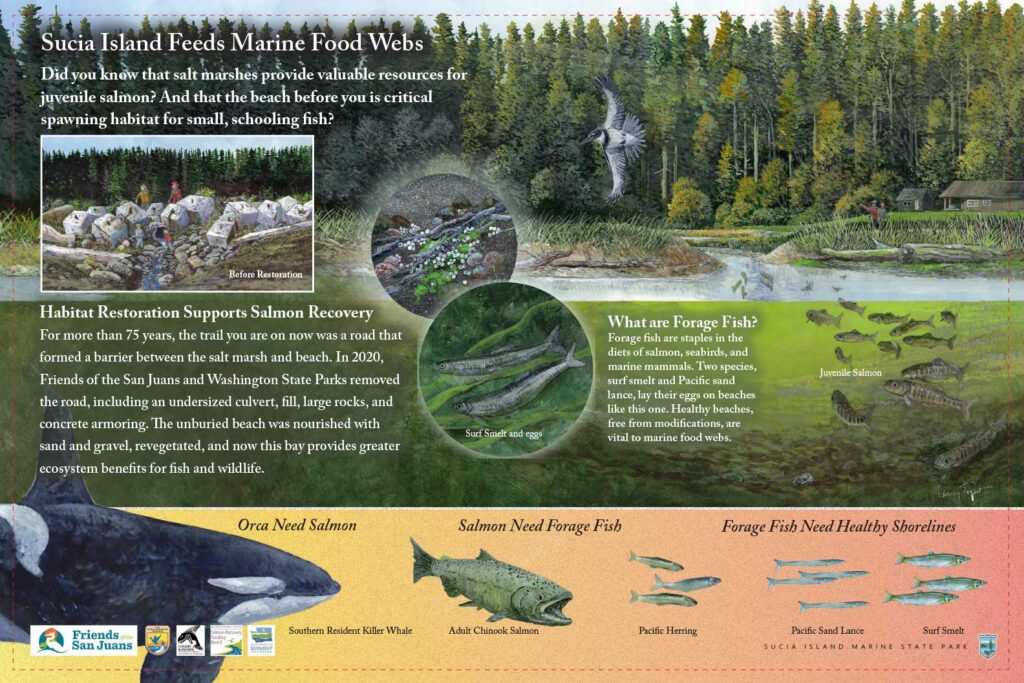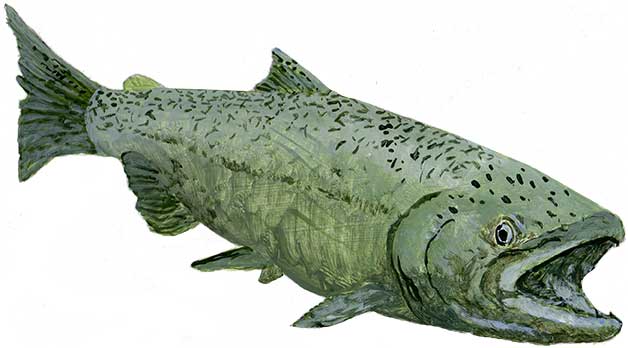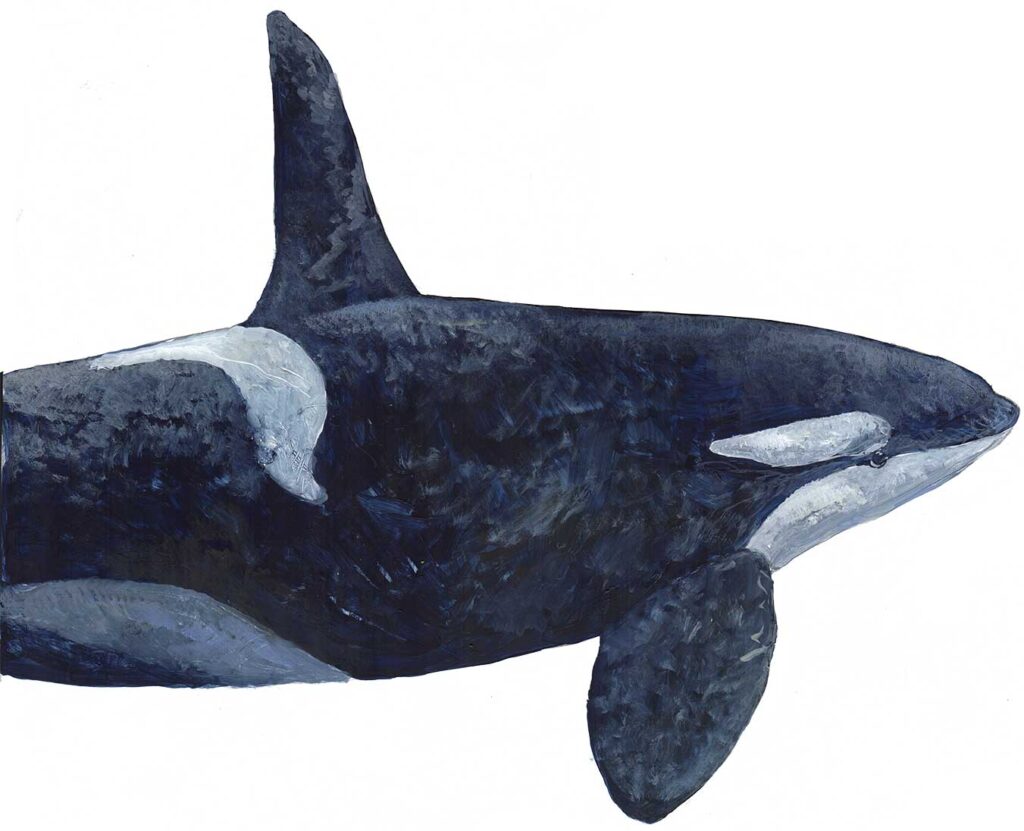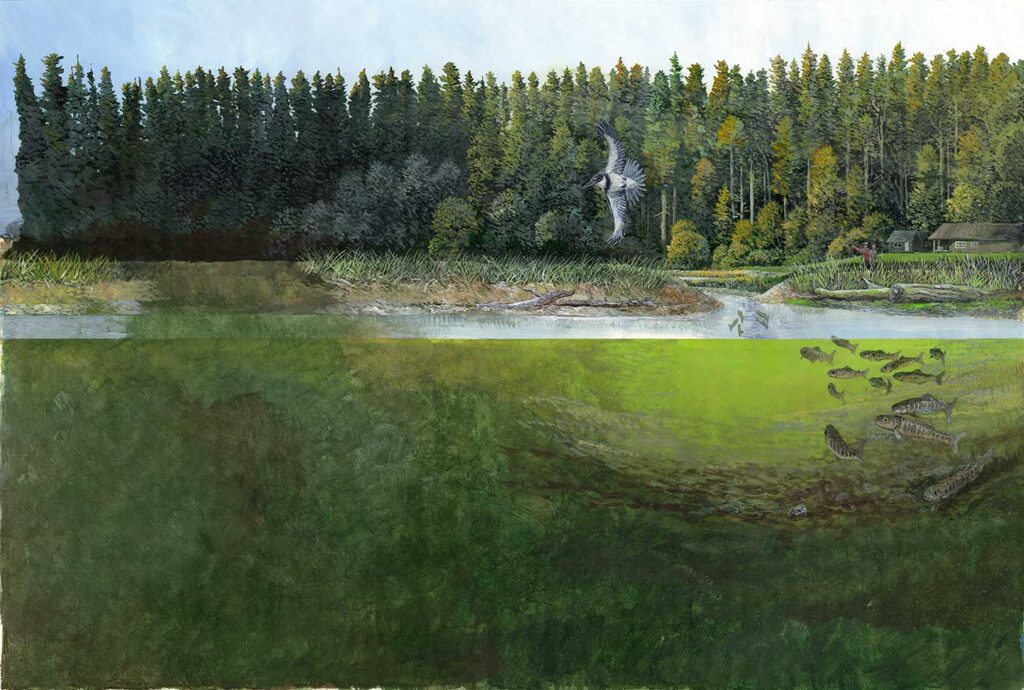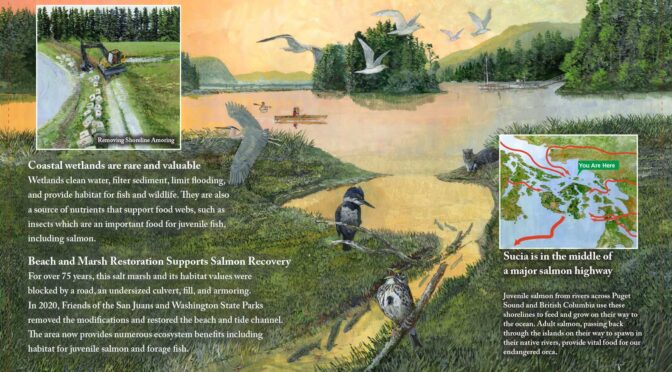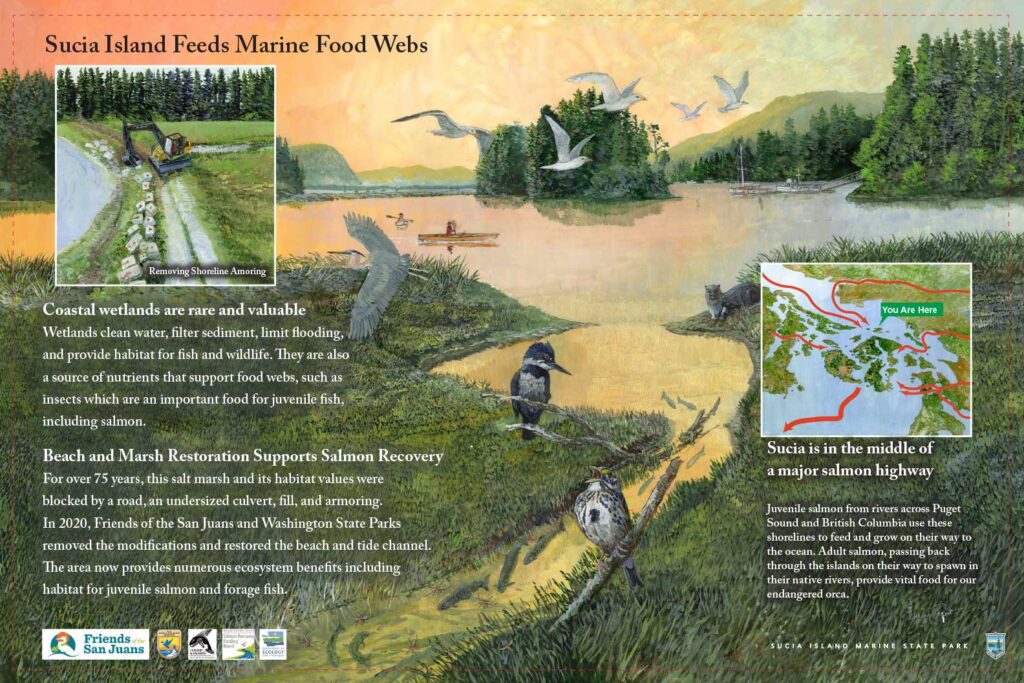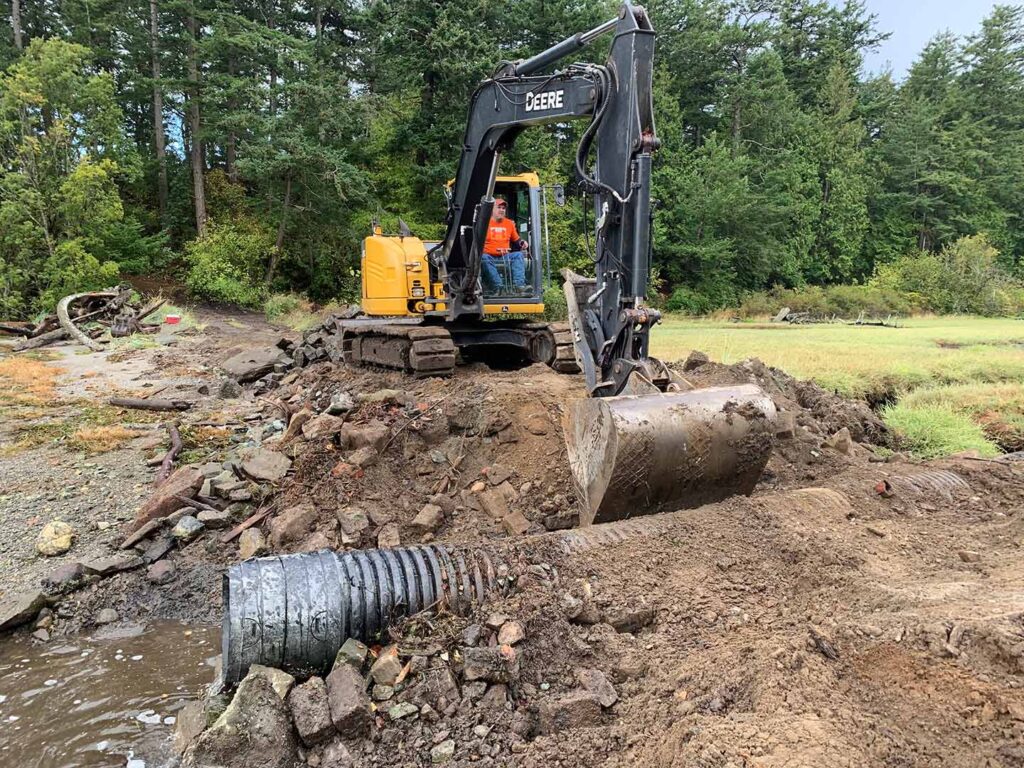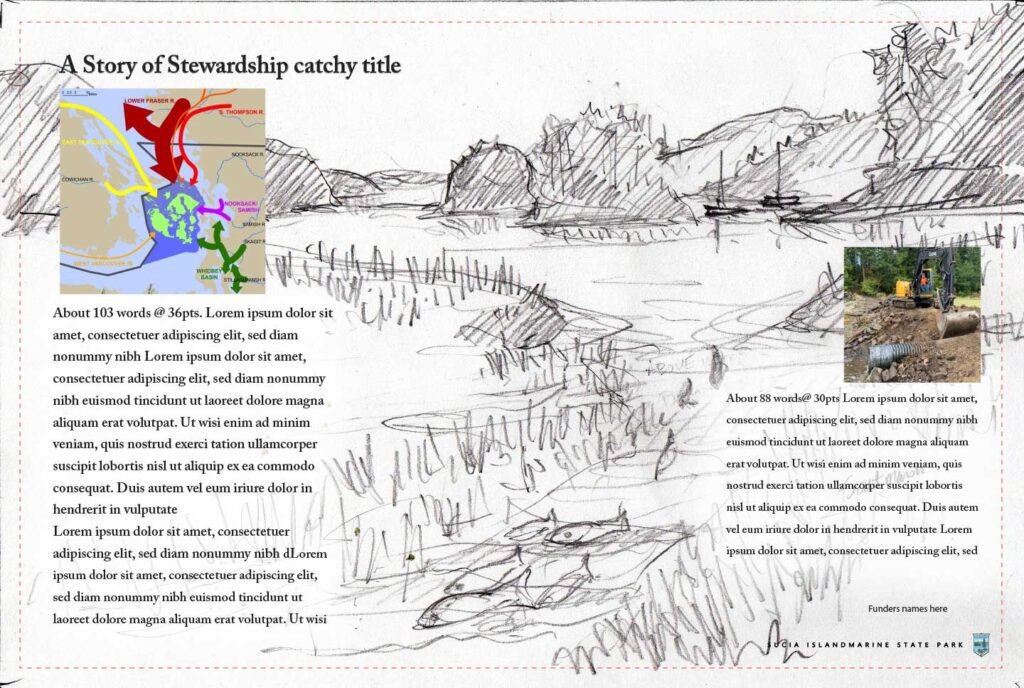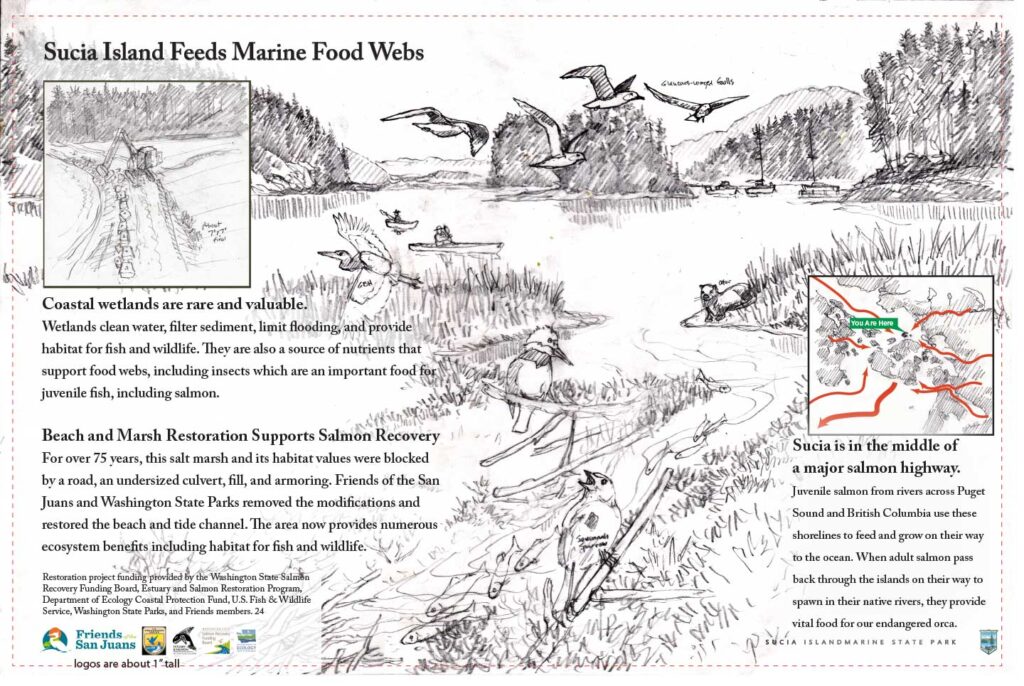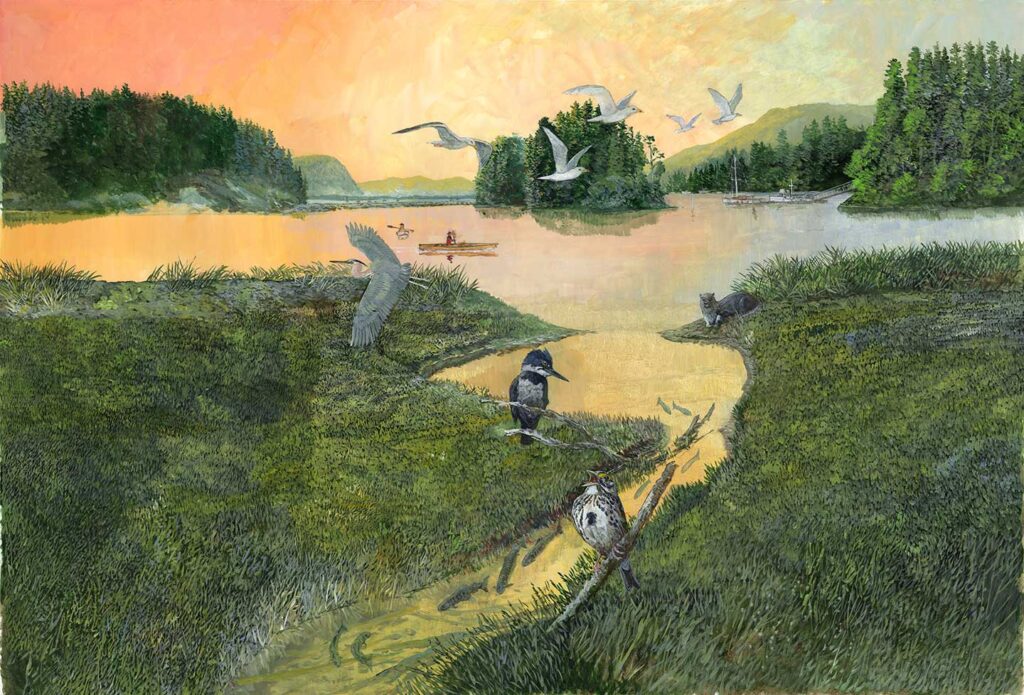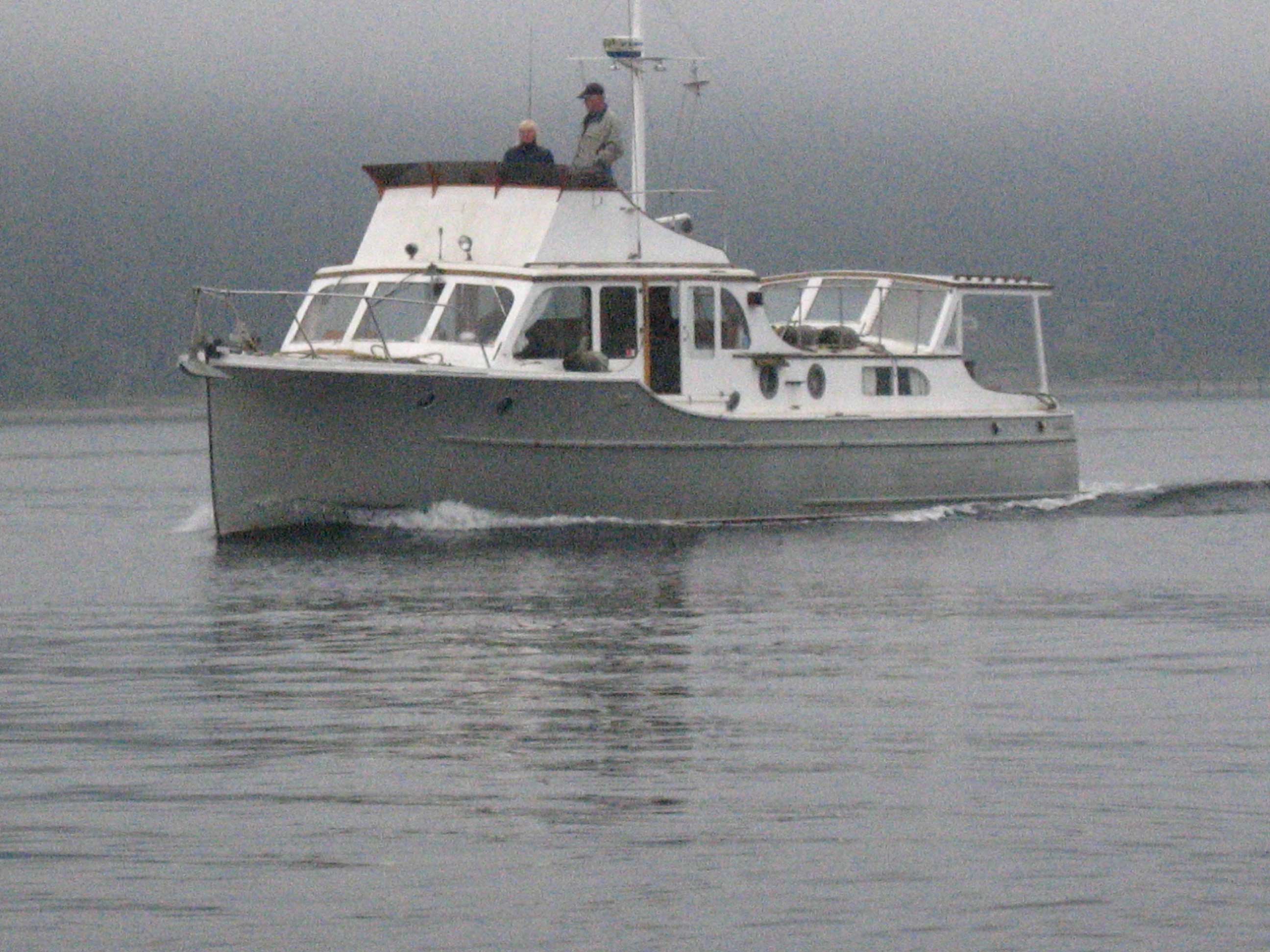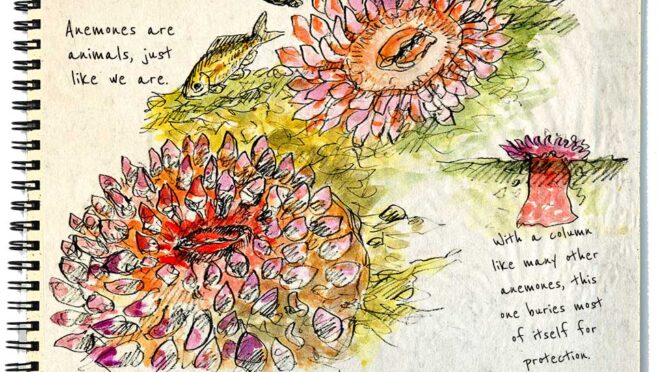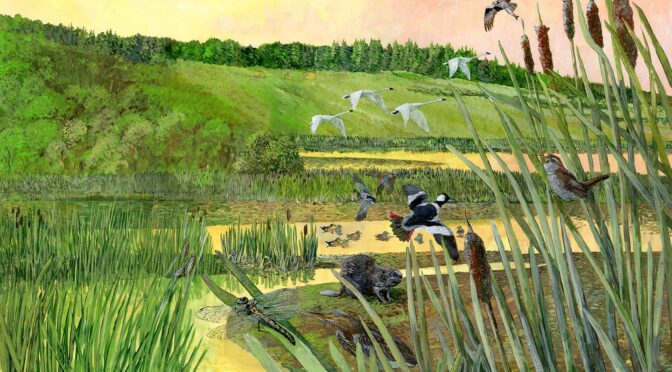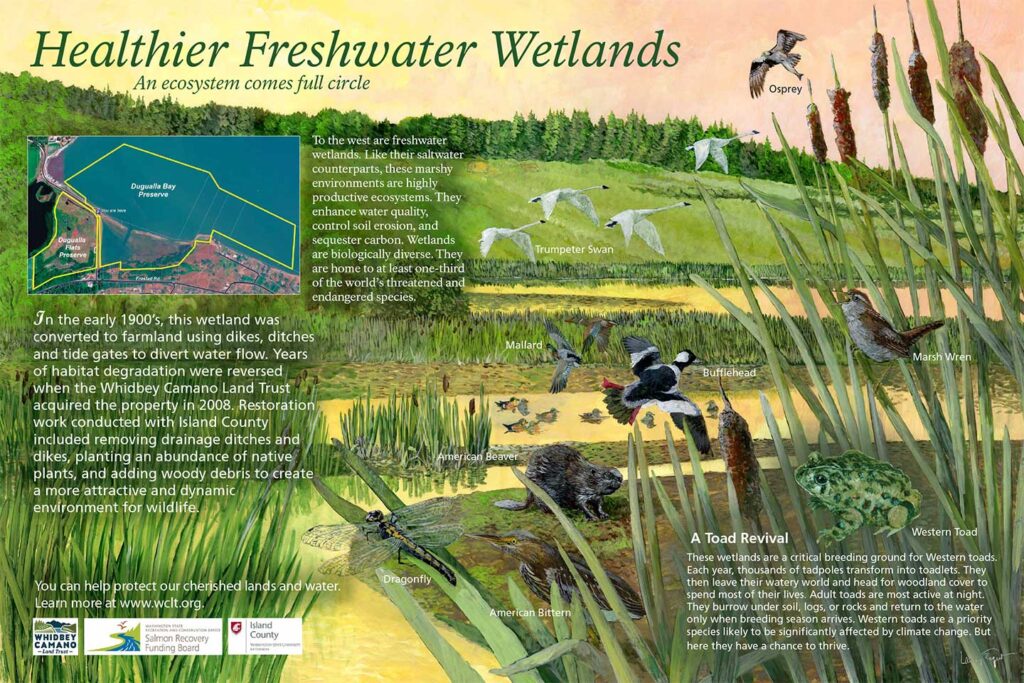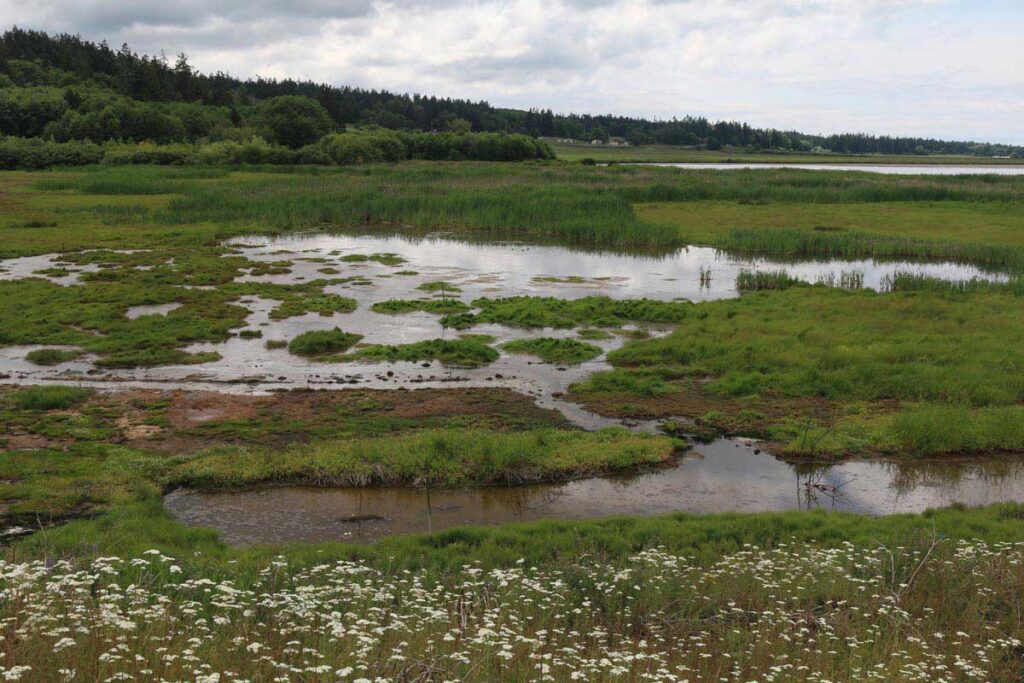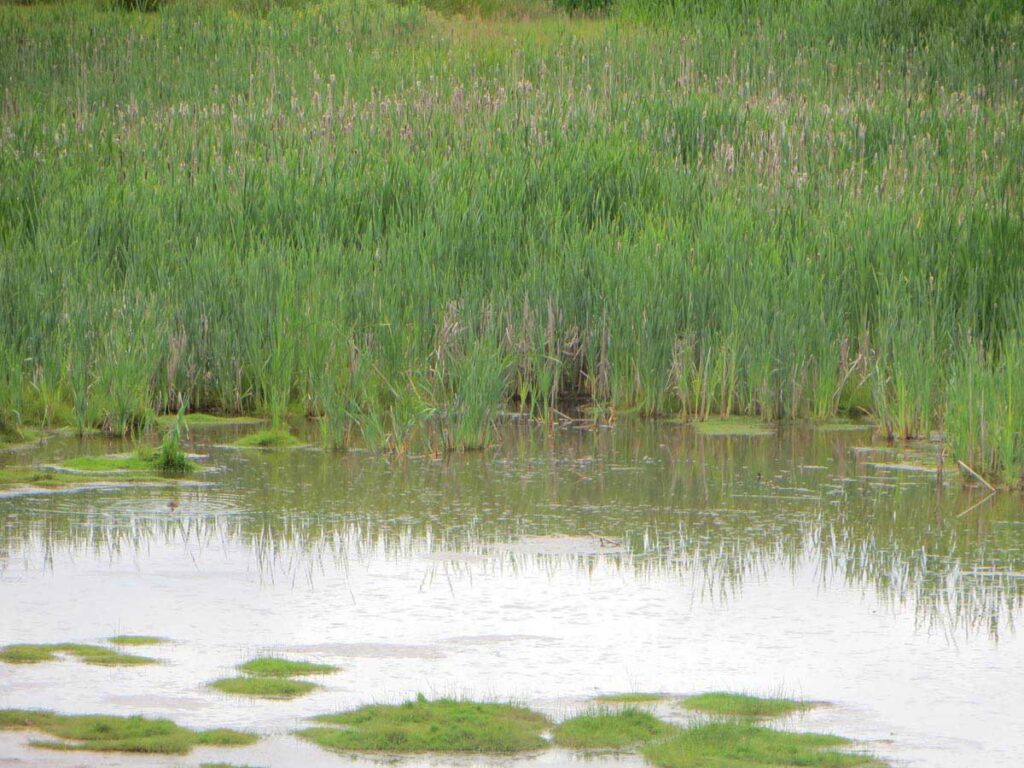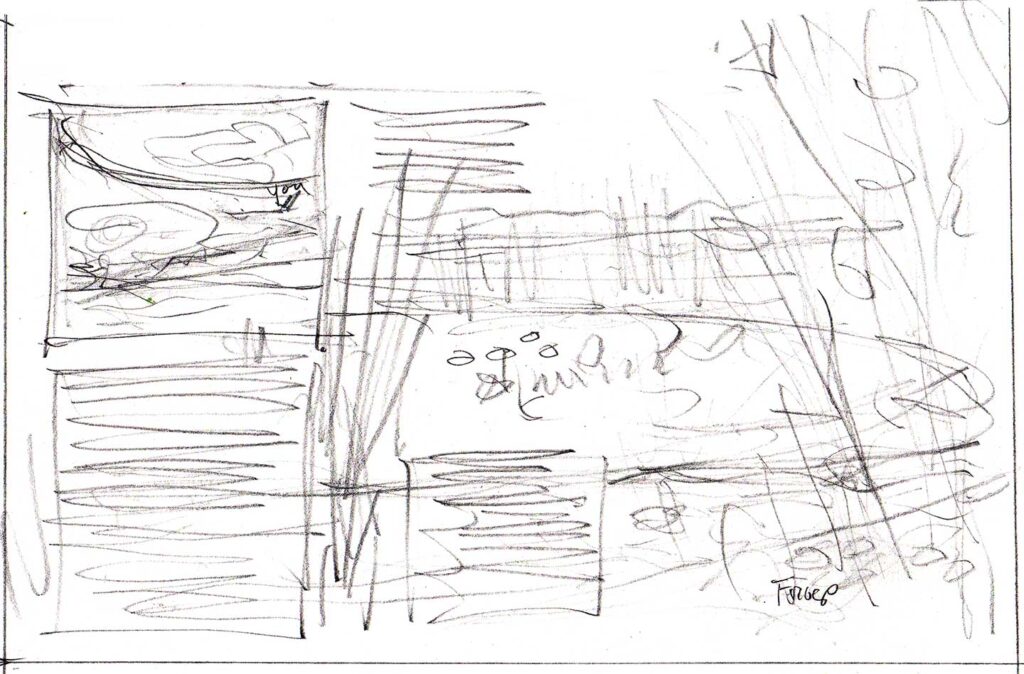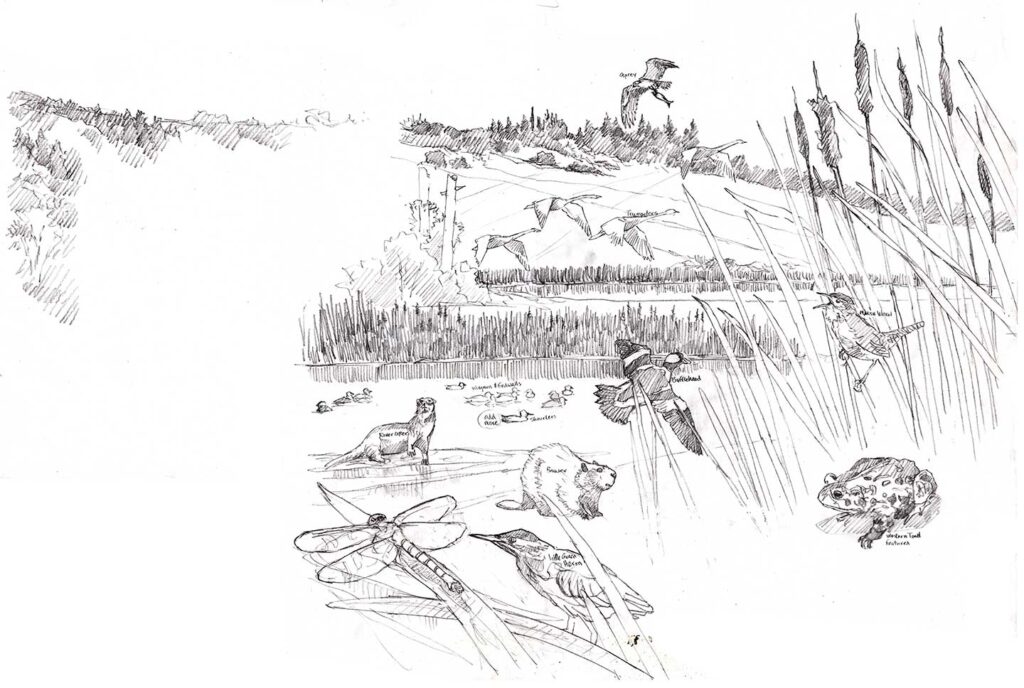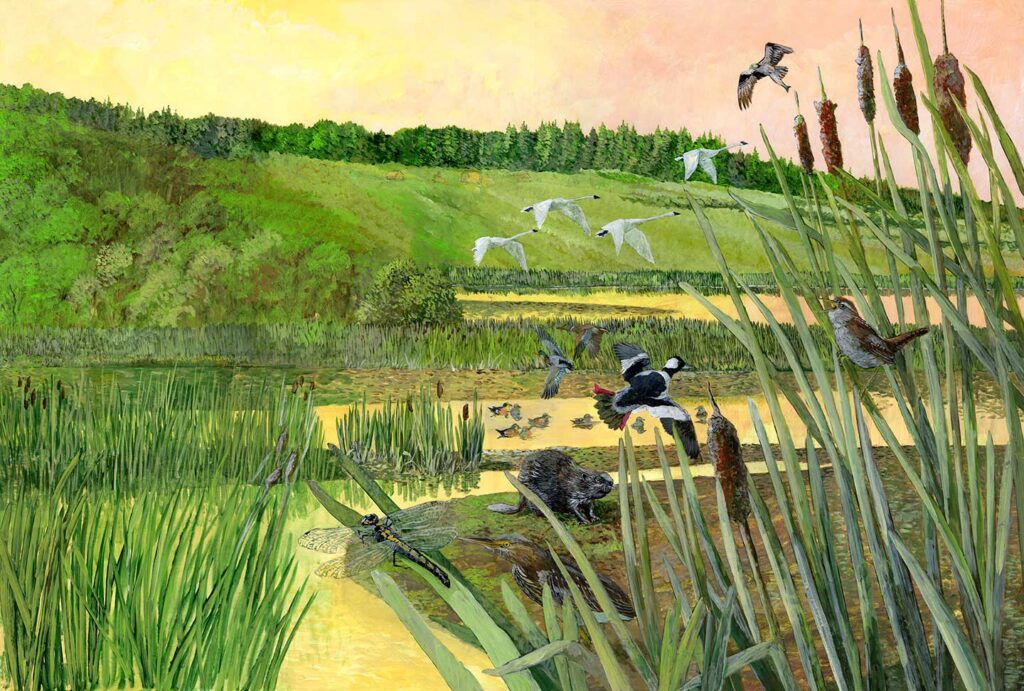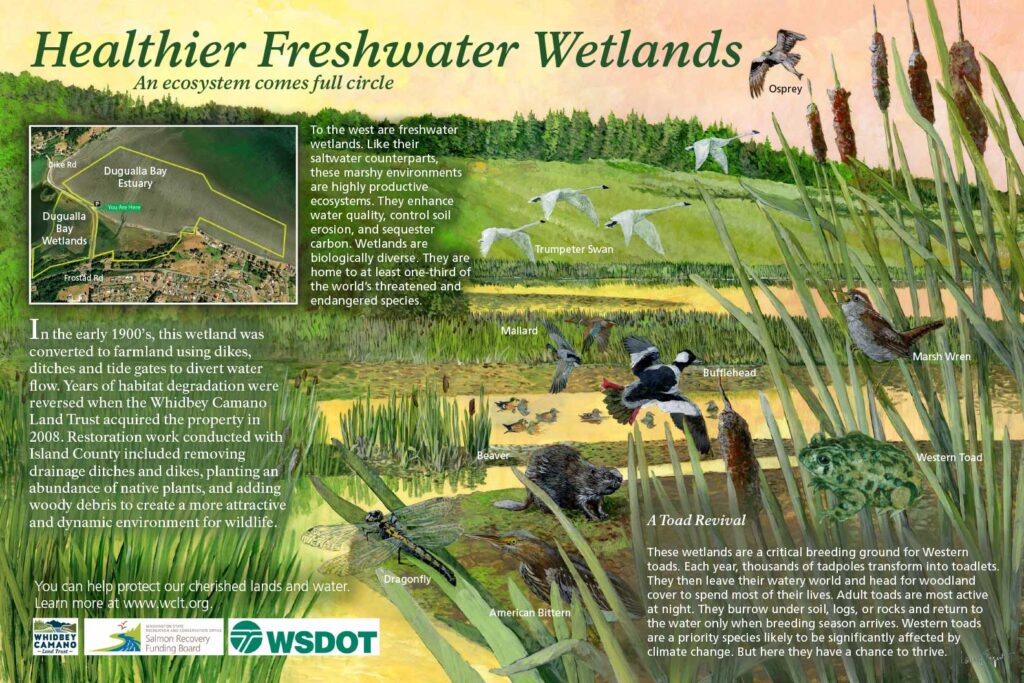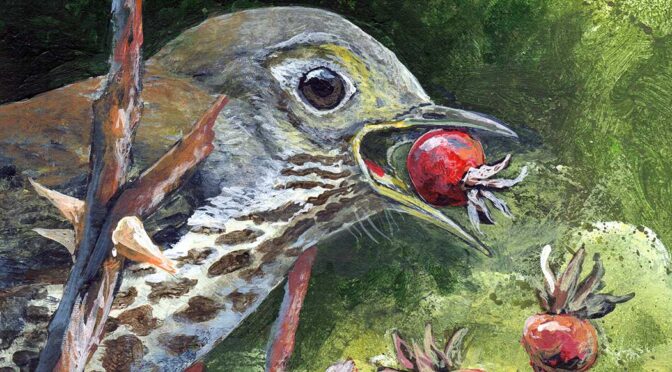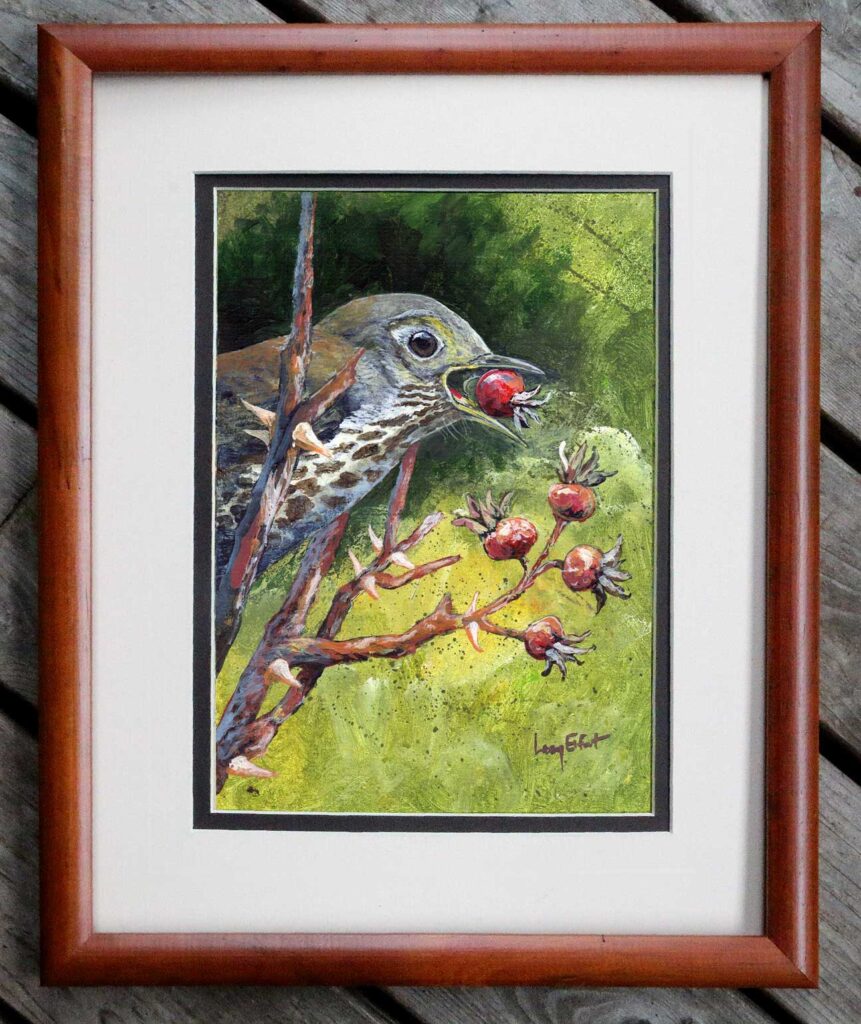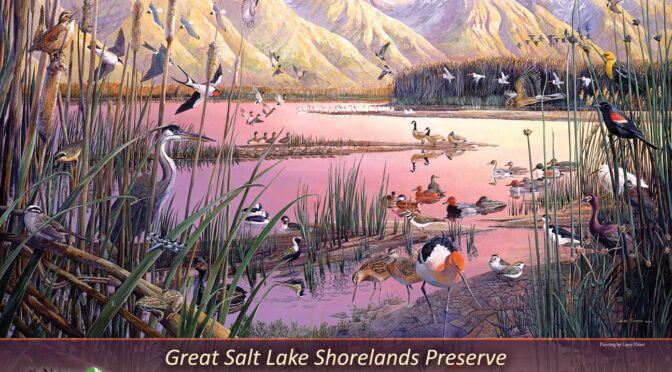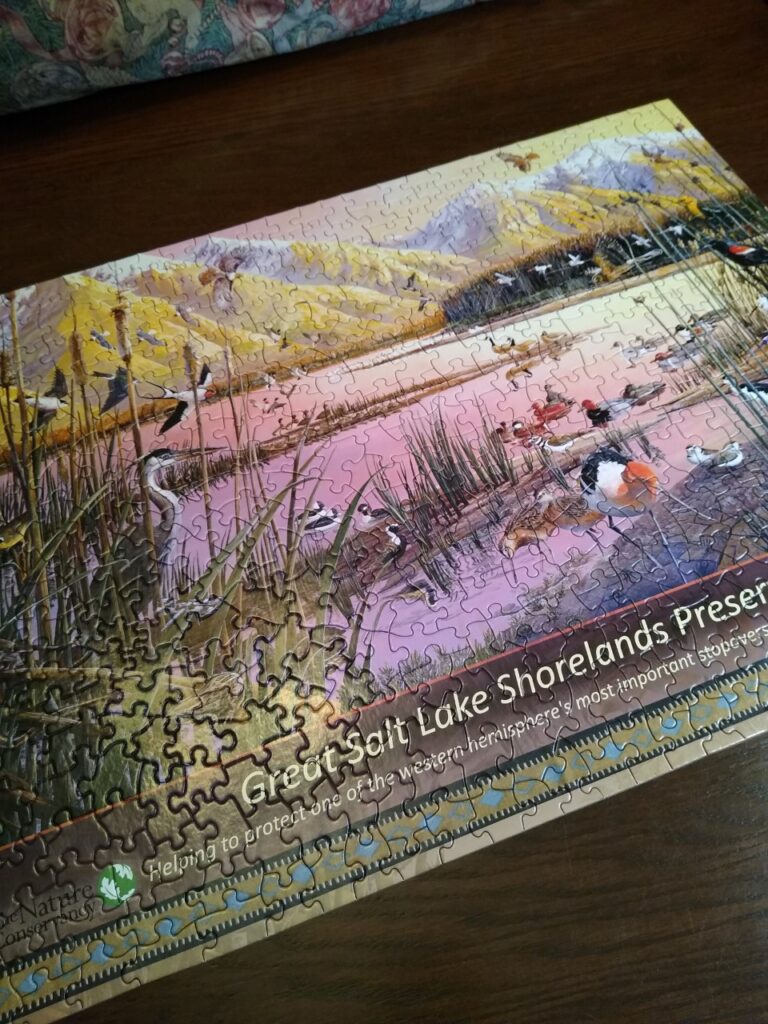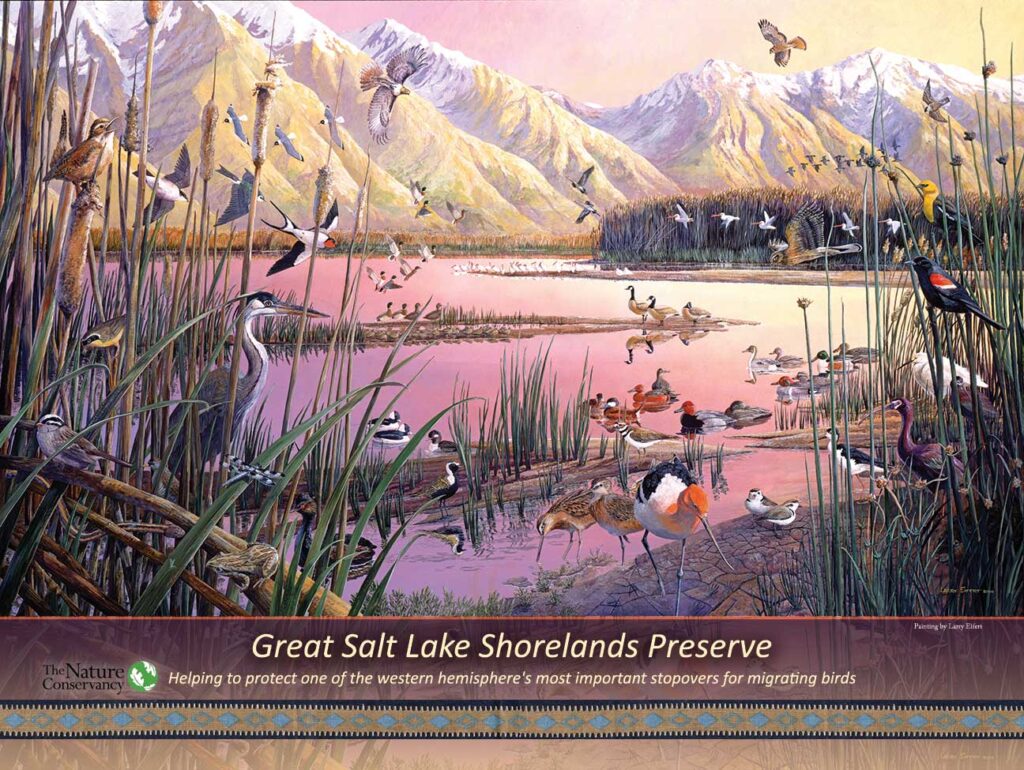This was the Orcas Landing in the San Juan Islands of Washington State a couple of years ago, cleaned up from when there were giant fuel tanks here. In the 1980’s I tied up at this dock, and did it again with another boat in the 1990’s. Now the tanks are gone, a new dock that’s not falling apart is there and, some of my art.
I received some photos of the final installation and it looks very good, so I thought I’d share it here. It took three years to get this figured out, but my part was just a small piece of it. If you’re waiting in line for the ferry, just walk down the ramp and enjoy the view.
I did two wayside panels here. One about the rich aquatic ecosystem right under the docks – a landscape few of us ever see.
And a panel about the tribal connections here. For hundreds of years, the Tulalip tribe would use their canoes with a complicated cedar fiber net system to create an artificial reef to trap salmon. Reef fishing, it was called. Back in the 80’s, I saw some of this actually happening and I’ll bet I’m probably the only artist around that could paint reef fishing from memory. For the bottom part, I used artifact photos from the Burke Museum as references for the tools, and a photo of the planking of our own cedar-sided house as a background. I thought it worked pretty well to tell a complicated story. These two images enlarge if you click on them.
San Juan County removed the wooden decking, added seating and new metal and cement decking, a huge tribal mural painted on the nearby building and some really wonderful iron blacksmithing of bull kelp.
In my mind, this is exactly how public art should be approached. Not ‘art by committee’ where a group selects some strange design by low-bid, but working it out with a broad number of skilled individuals coming together to contribute what they each do best. Check out the seating and native plant garden. I’m proud to have been a part of this, and it sort of comes full-circle for me and my history here.
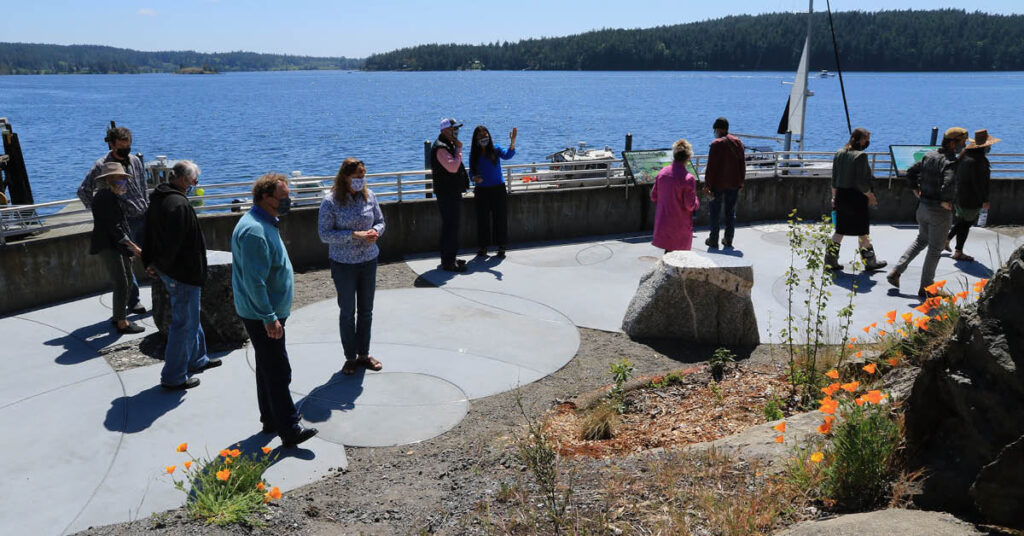
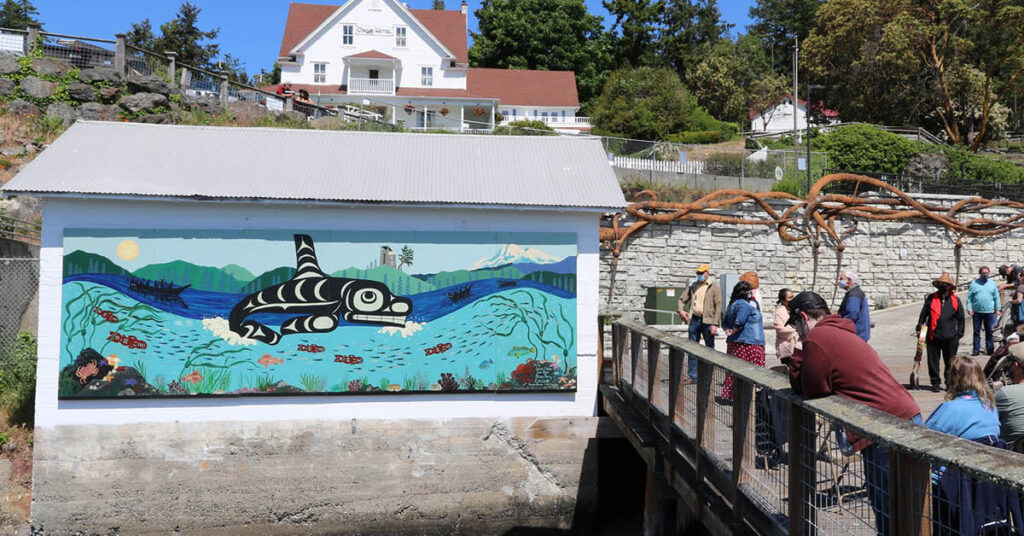
And here’s a story in the local paper on Orcas Island.
This makes a grand total of 24 paintings now installed on Orcas Island as public art. I get around!
Thanks for reading this week. You can sign up for emails for these posts on my website at larryeifert.com.
Larry Eifert
Here’s my Facebook fan page. I post lots of other stuff there.
Click here to go to our main website – with jigsaw puzzles, prints, interpretive portfolios and lots of other stuff.
Nancy’s web portfolio of stunning photography and paintings.
And here to go to Virginia Eifert’s website.
